October 23, 2022
Martha O'Kennon
There are still a few clumps of Aster flowers. But this week I didn't see many Bees on them! Besides the turning trees, the Euonymus were responsible for most of the color in this yard.
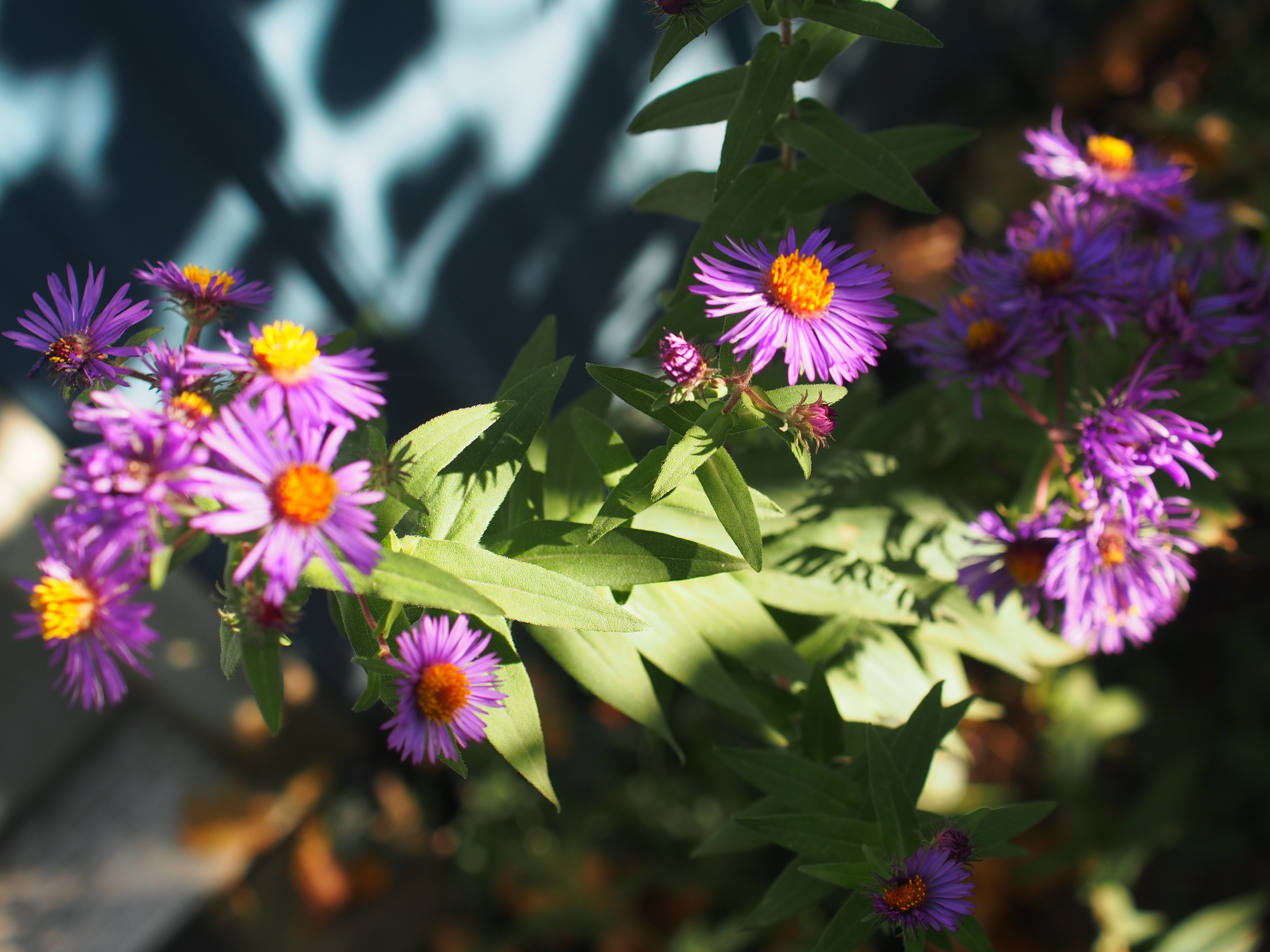
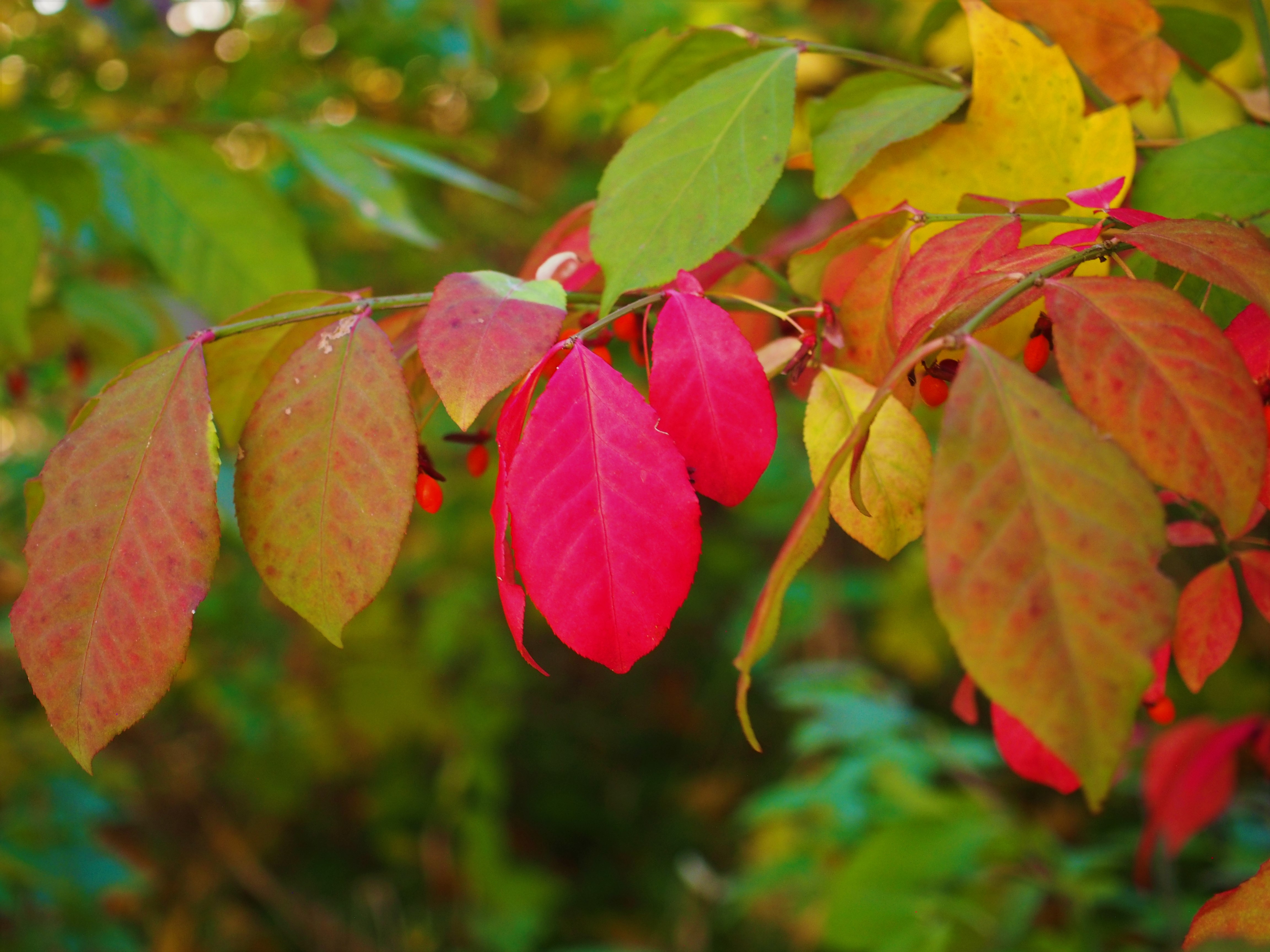
I was about to say I hadn't seen any Ants this week, but I did manage to see Winter Ants in a couple of places. First is one that was running along the Wall as usual. The second and third were on a leaf.

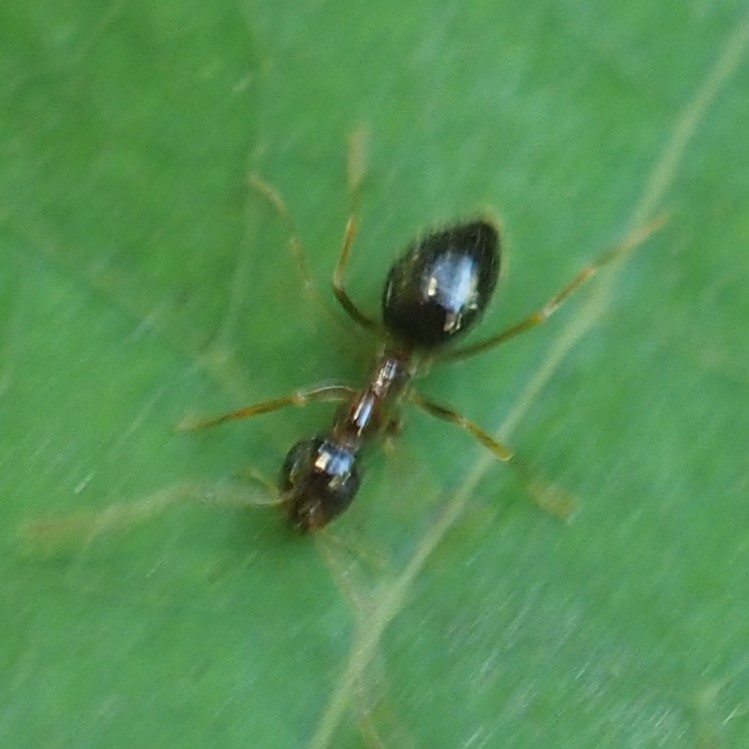
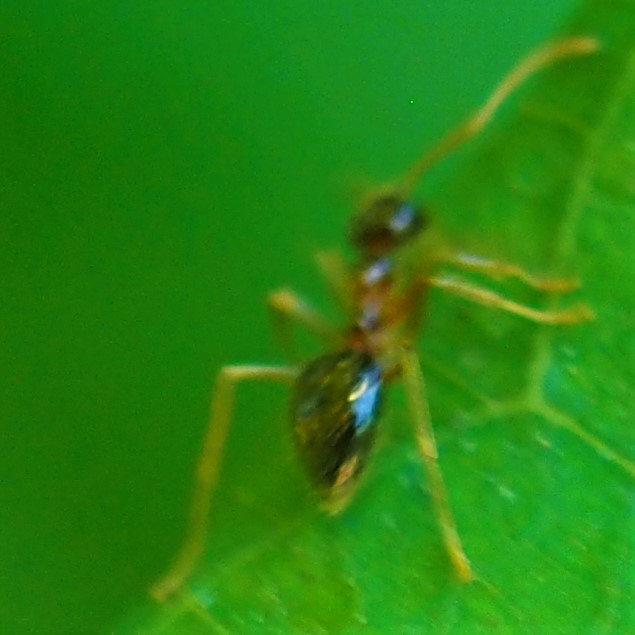
Remember that there is information in the name of the file for each image. You can see it by mousing over the image - look at the lower left of the screen. Or you can click on the image to get to the (usually) larger image. Then the info is displayed in the address line above. Sometimes the second click will actually display a different view of the original image.
So far this week we've caught one little Bee on one of the last pink Aster Flowers. It seems to have a dark blue metallic coat.
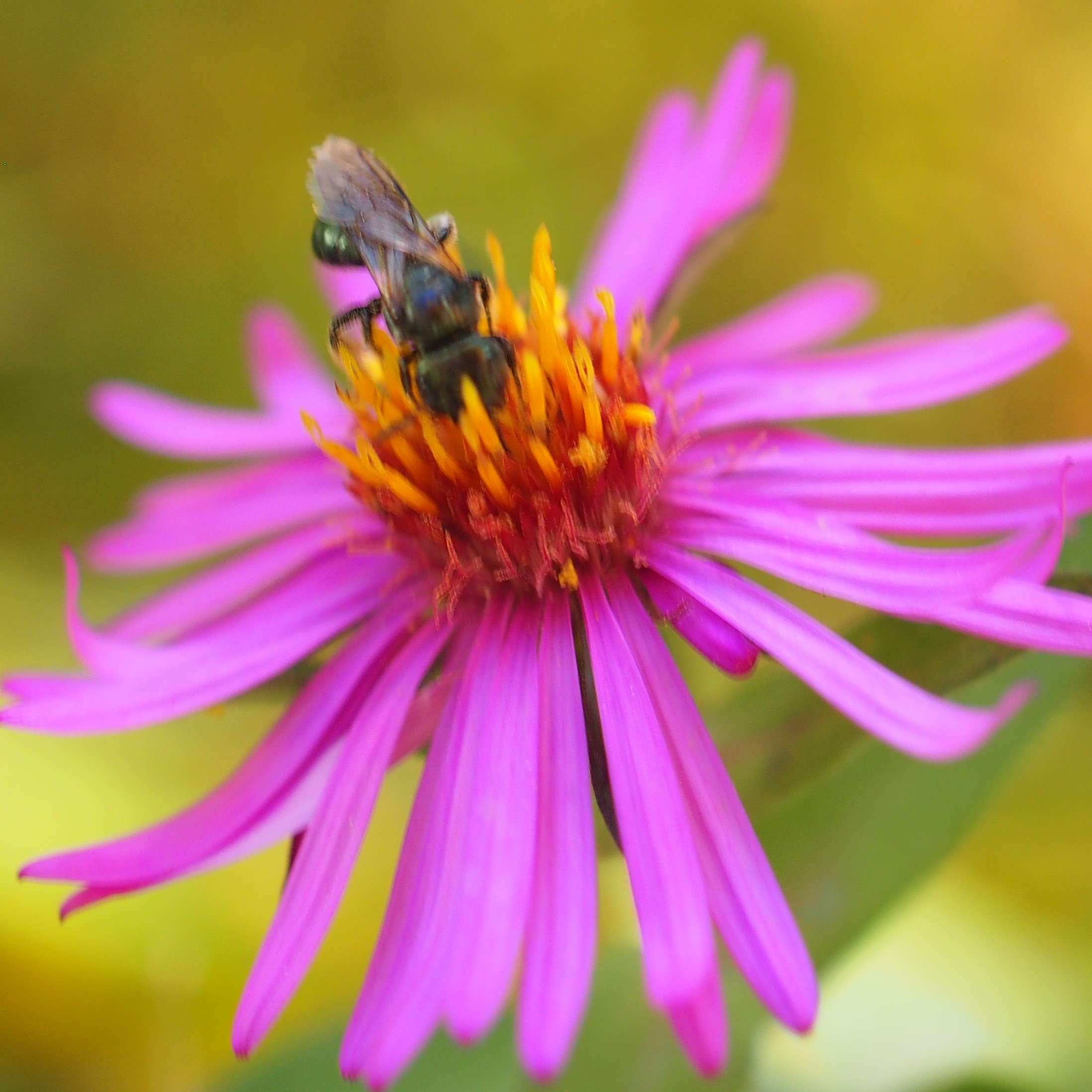
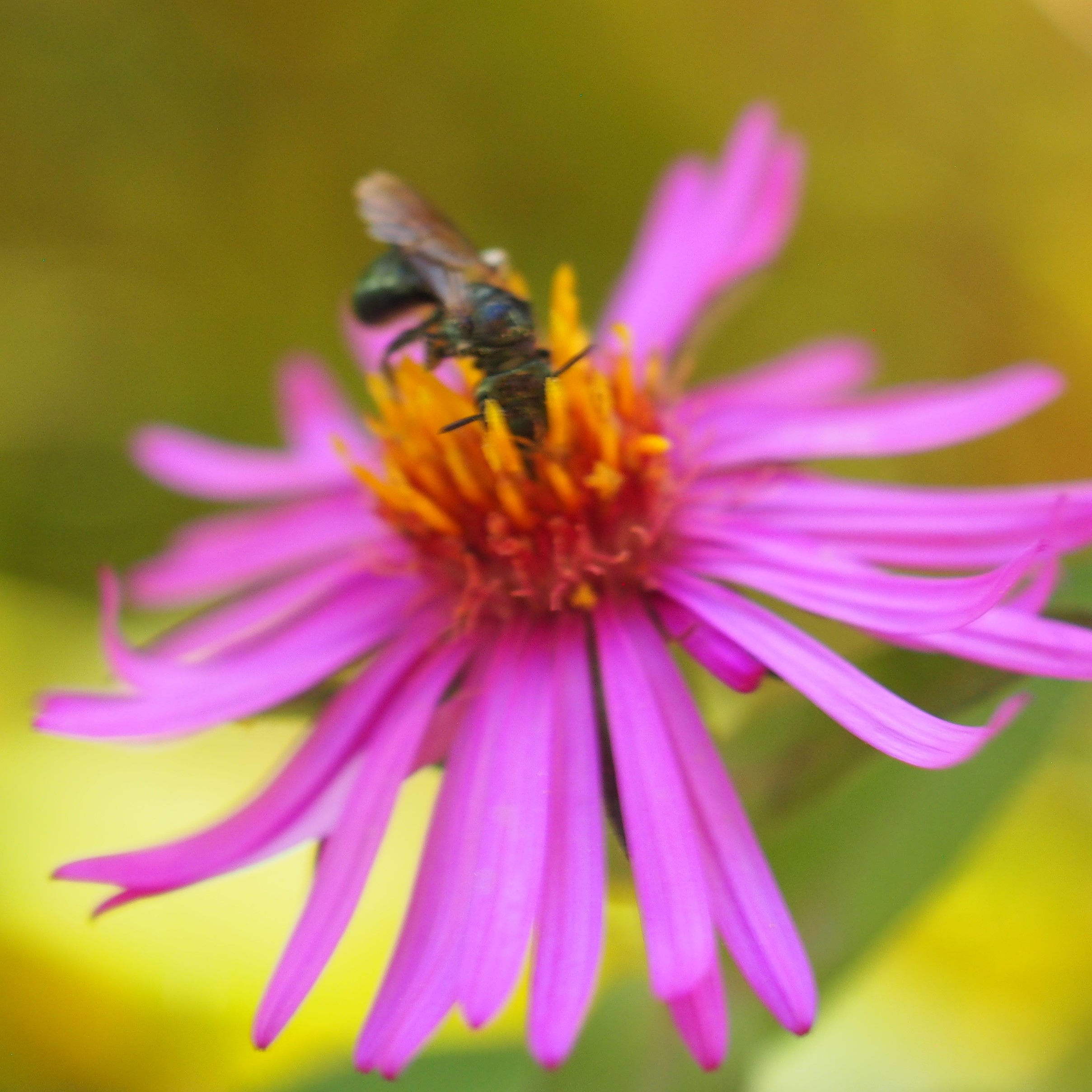
Here are an Asian Lady Beetle and a newish tiny Beetle of Subfamily Cryptophaginae (thanks to @borisb for that). The third is a Picnic Beetle. And last we have a Striped Cucumber Beetle. I had thought we wouldn't be seeing any more of those this year. Amazing!

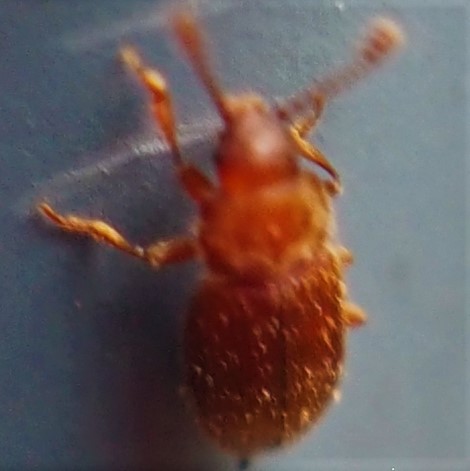

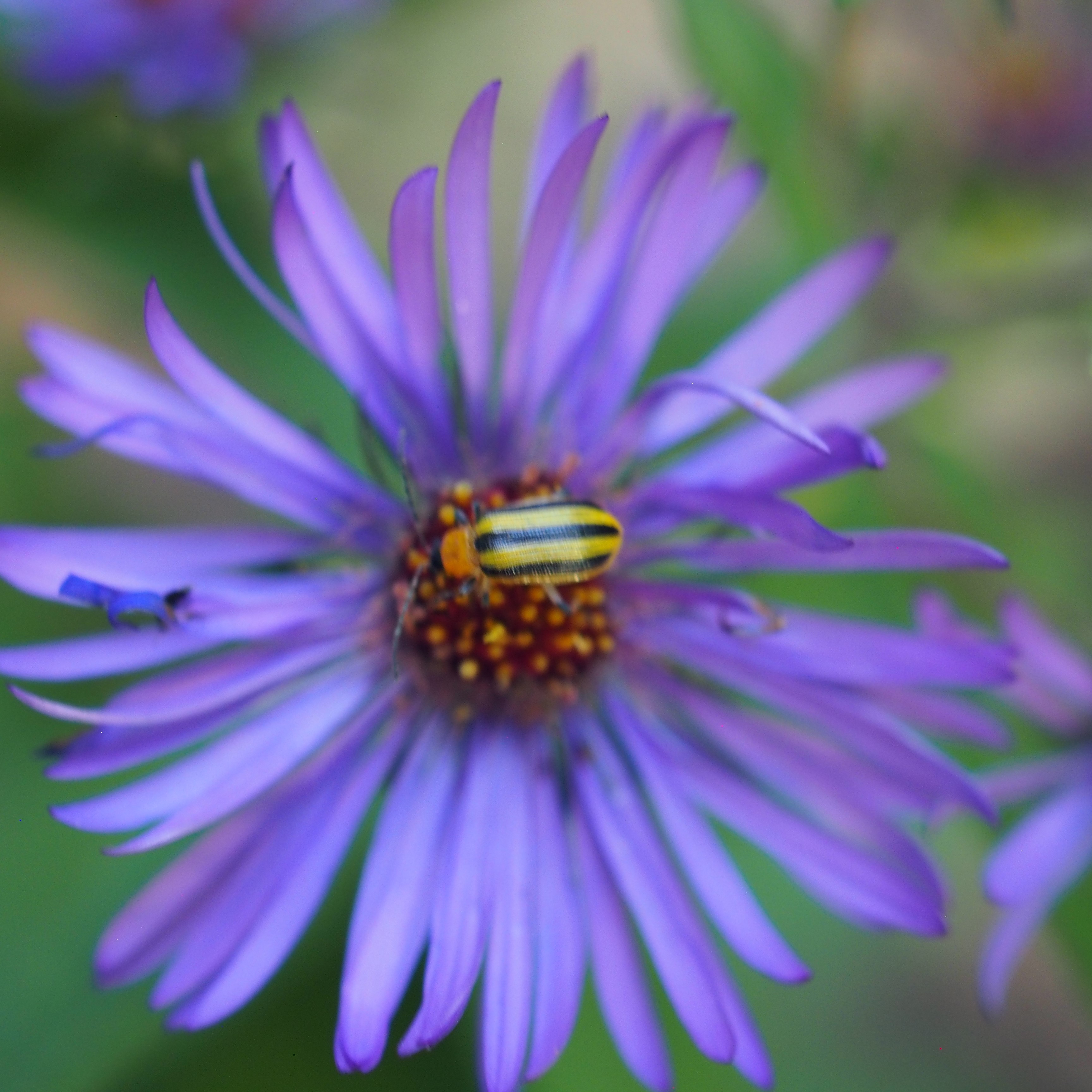
The Bugs, as in last week's issue, were rather more amenable to being shot. The goldenrod, having mostly dried up, wasn't such good mating territory for Drymus unus, but they're still around on the South Wall, as are the Eastern Boxelder Bugs.
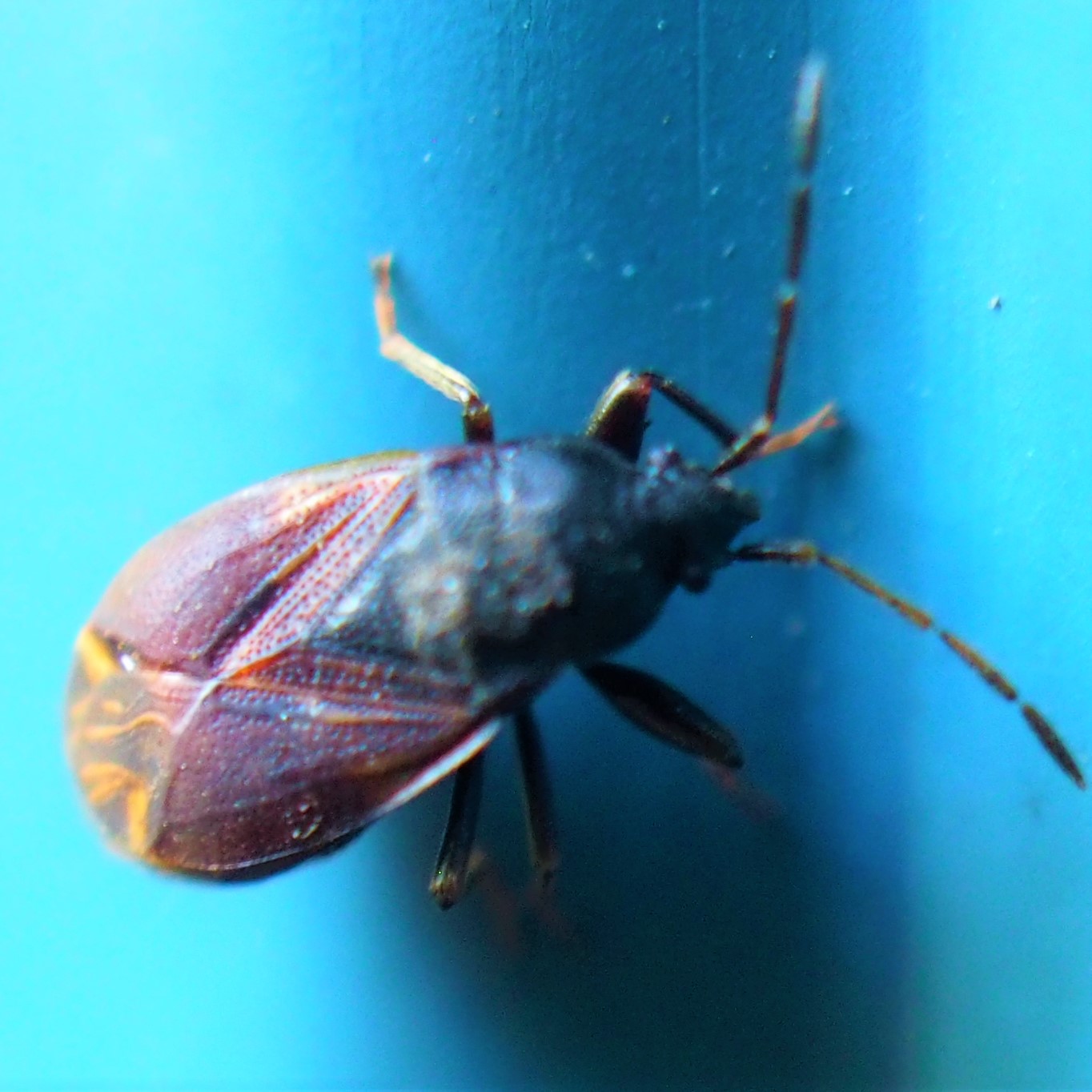
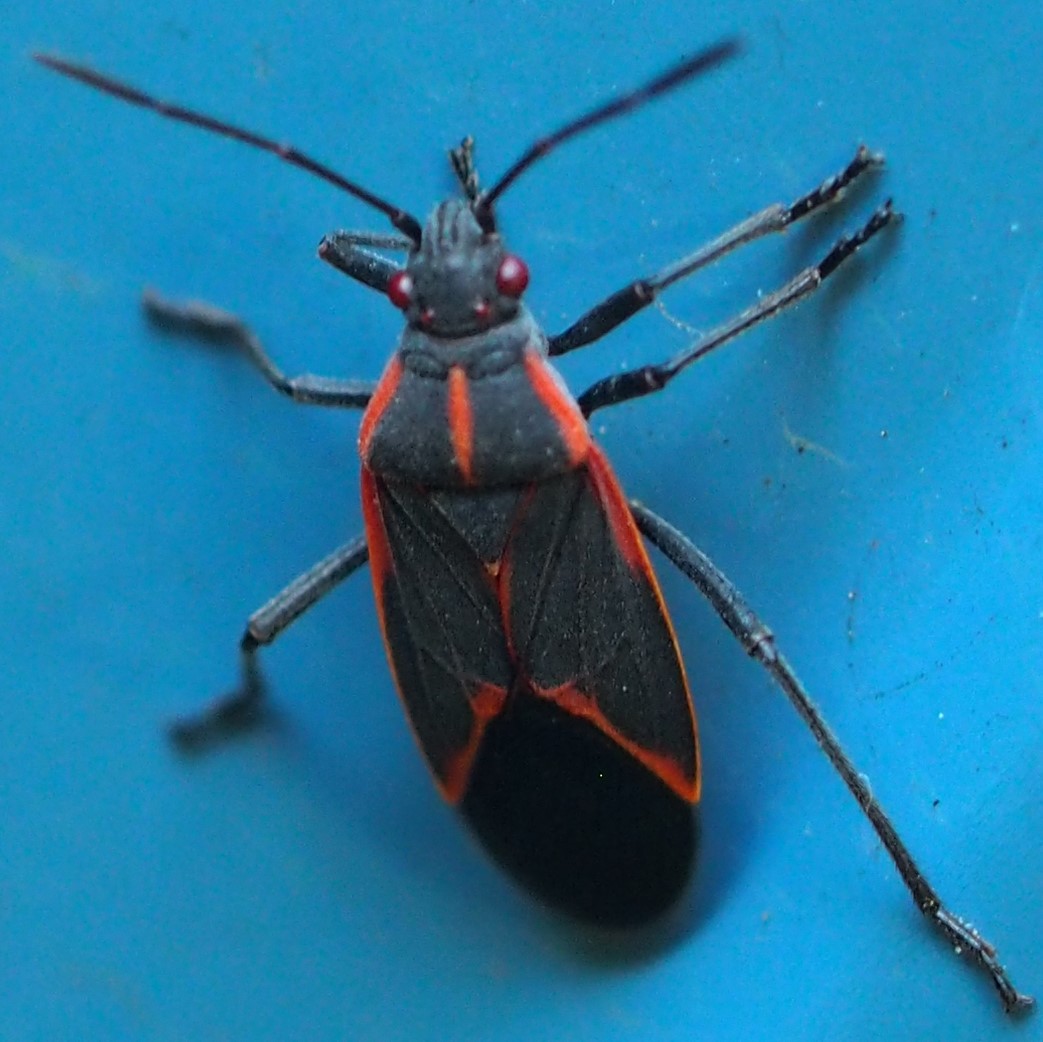
And the Leafhoppers, which I'd thought might have given up their little ghosties after the bitter chill that settled in this past week - They were back in about as good a show as I've seen for a good while. First here is that beautiful Erasmoneura vulnerata; then we see a couple in genus Eratoneura - first is E. ardens, and then comes that dotted version. This yellow-patterned fellow also looks Eratoneura-ish. I will blame the shot quality on the new camera.
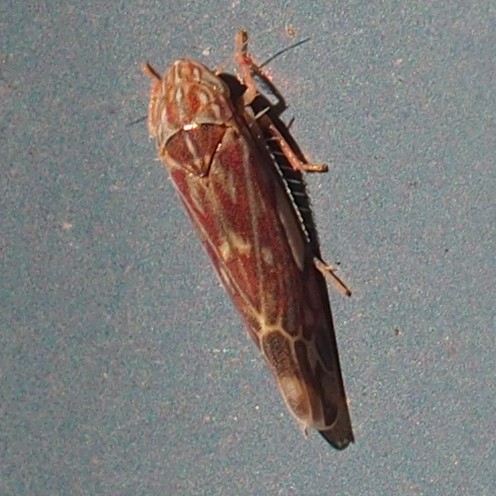
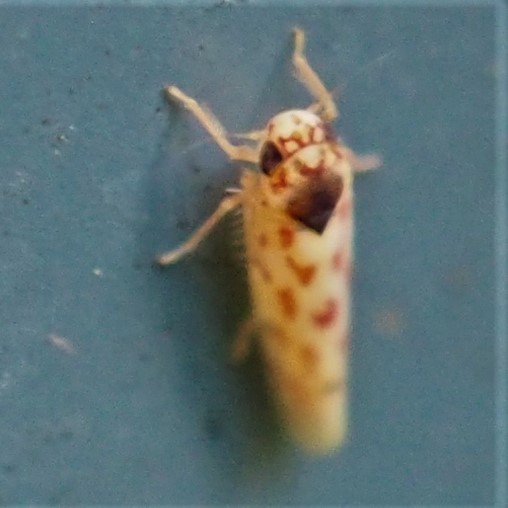
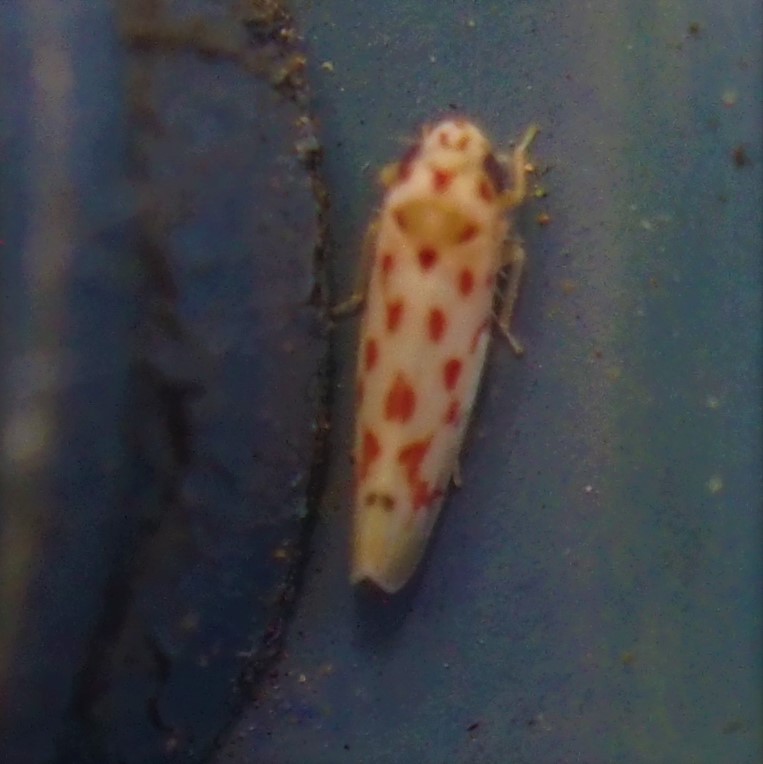
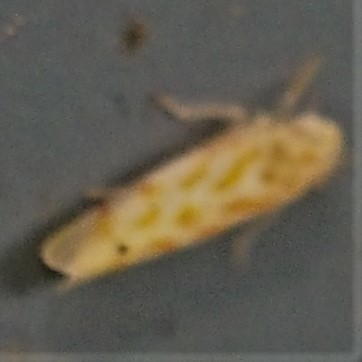
And here are some other ones that don't belong to any of those preceding genera. The first two are the Coppery Leafhopper, or Jikradia olitoria, and the third is the Red-banded Leafhopper.
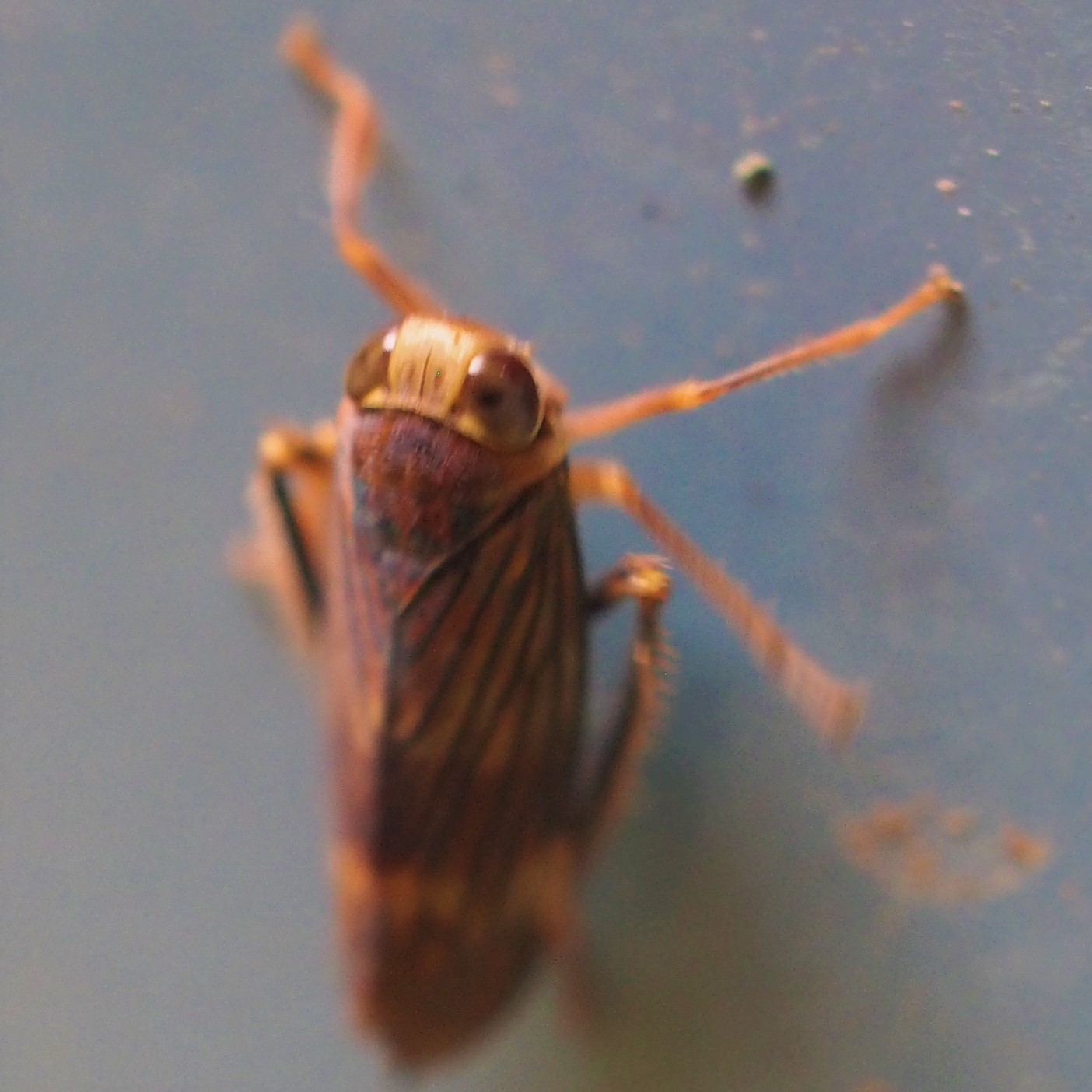
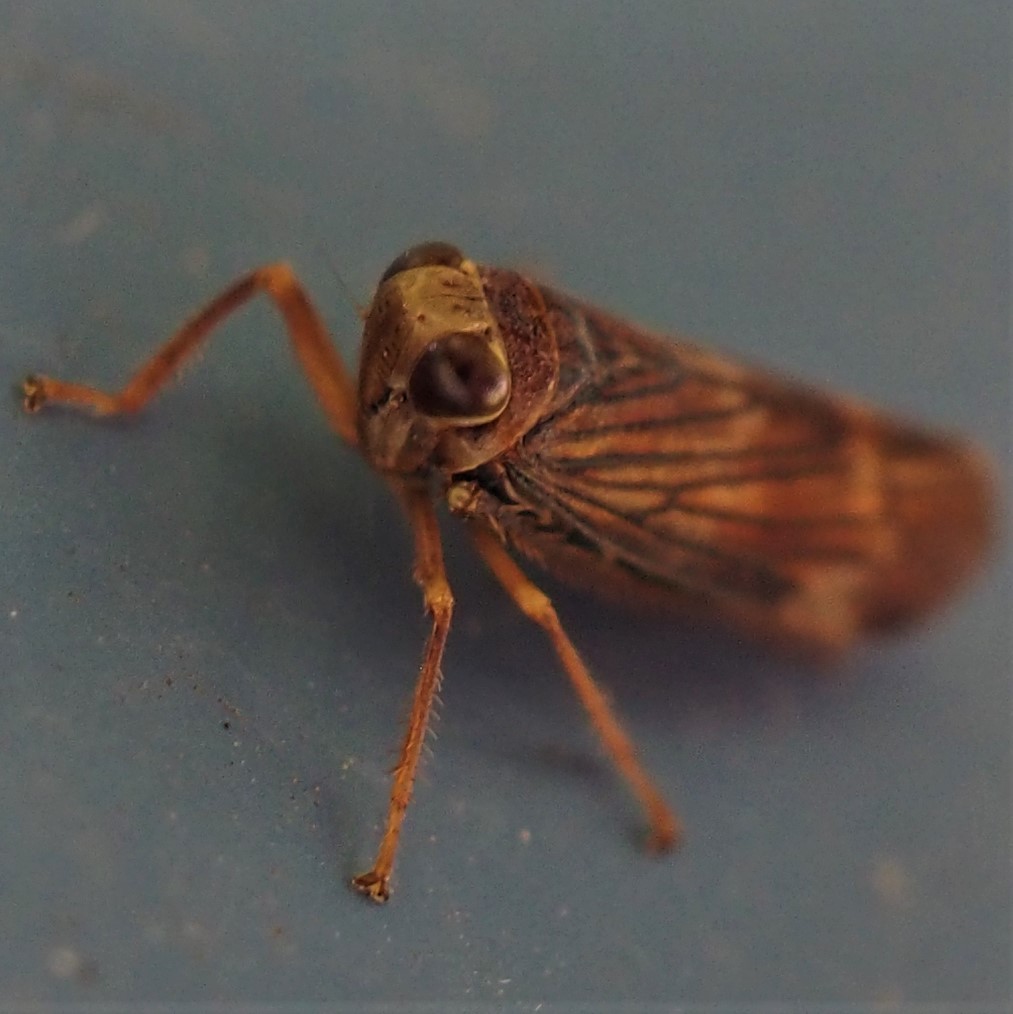
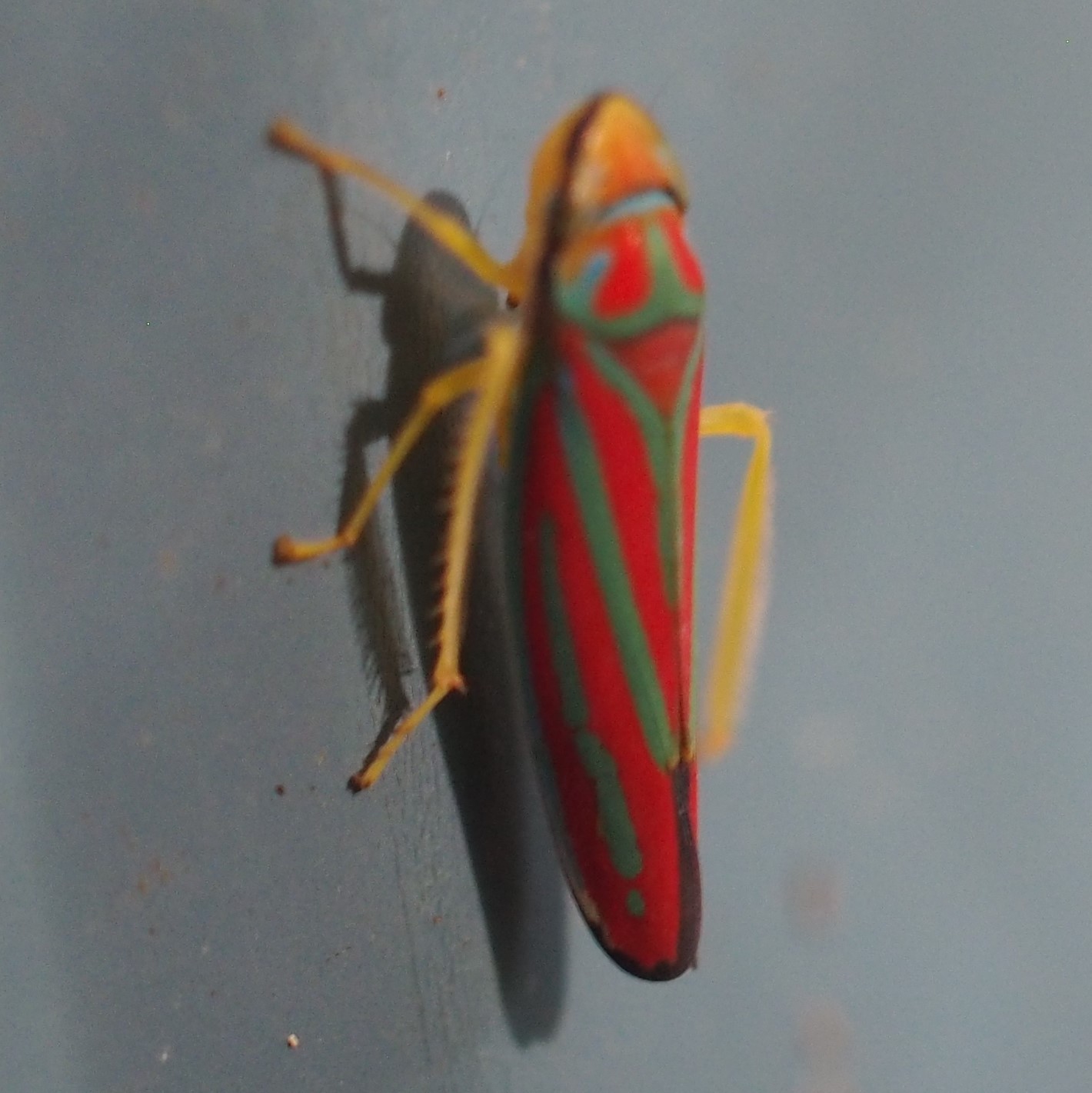
Here we have two photos of a late-instar Green Stink Bug. And finally one of our "villains", the Brown Marmorated Stink Bug or BMSB.
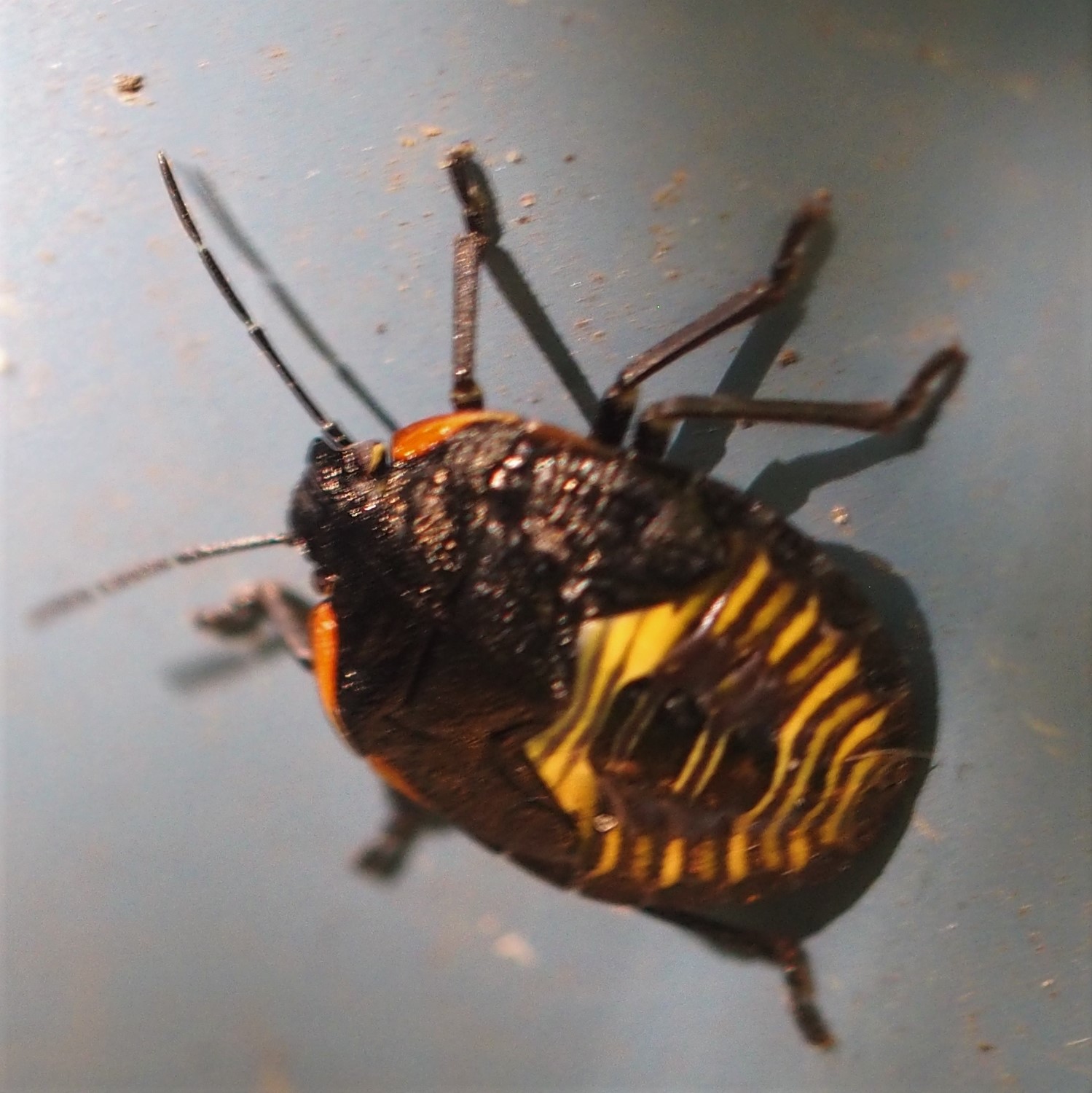
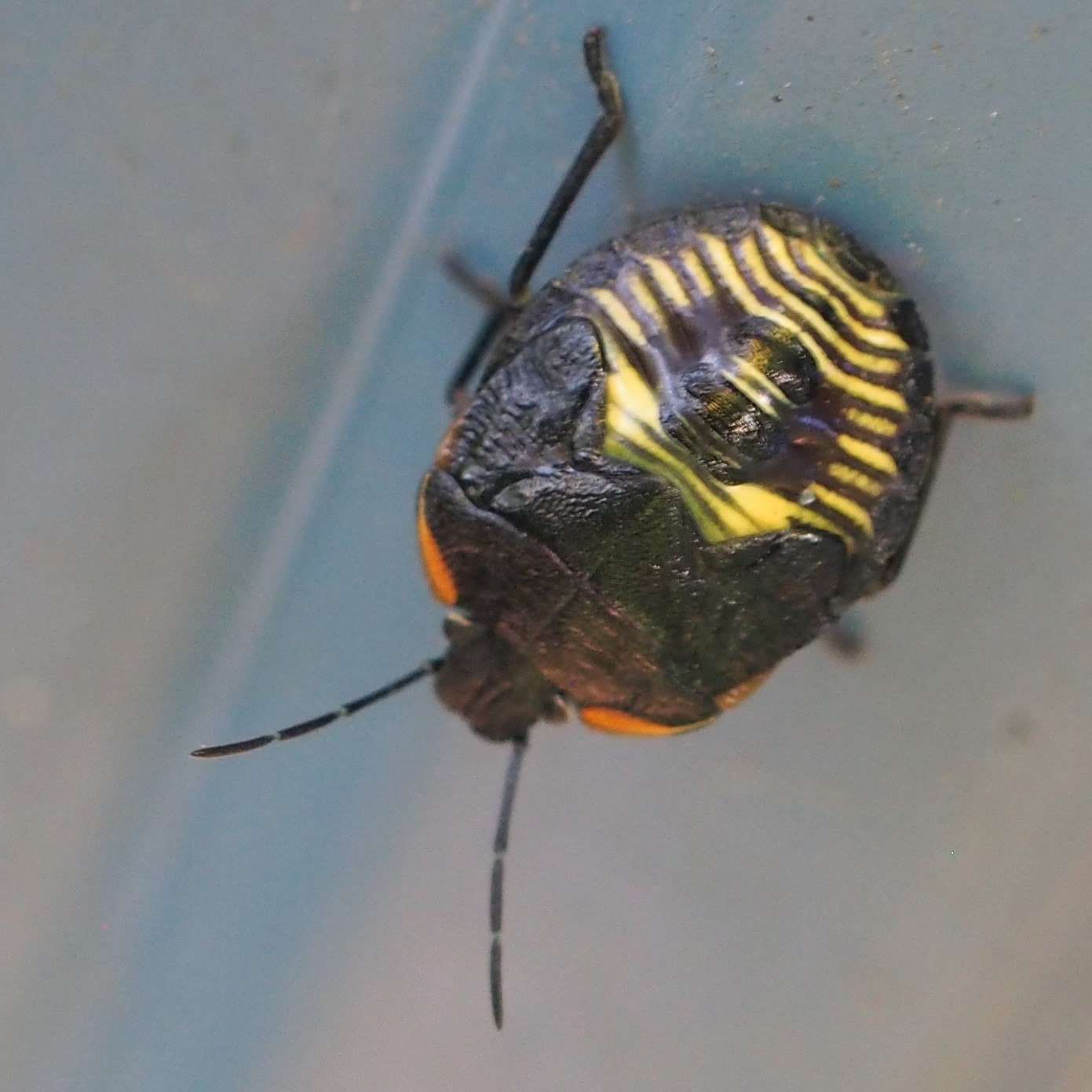
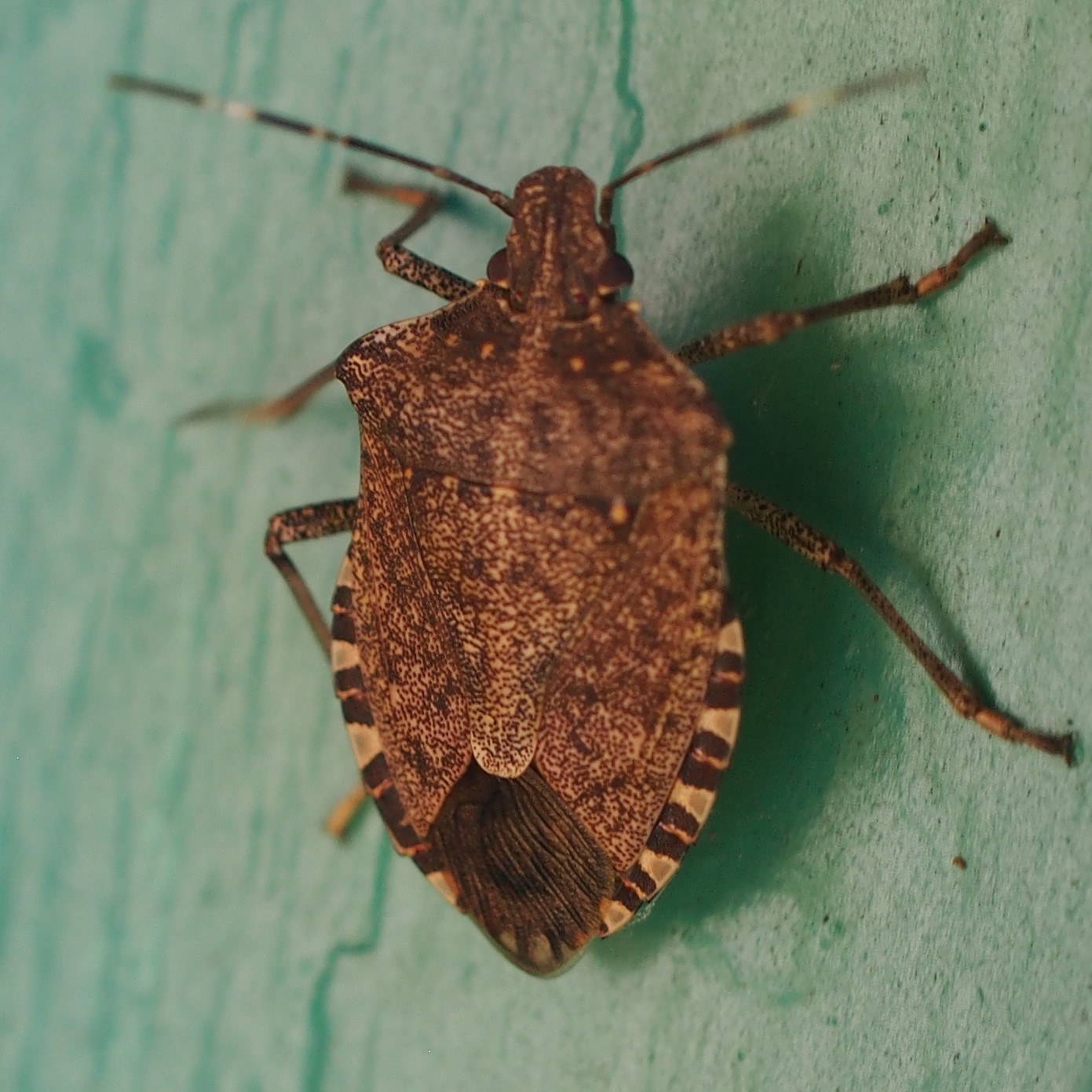
Since the Barklice are so much smaller than most of the Bugs and Beetles, this was not a good week to be trying to get good shots of them. (Remember, I'm learning on a new camera.) A lot of the familiar ones, like Graphopsocus cruciatus, are recognizable, as in pictures 1 and 2 here. And the movie function seems to be working. Image 3 shows two G. cruciatus pushing back at each other. It will get better!
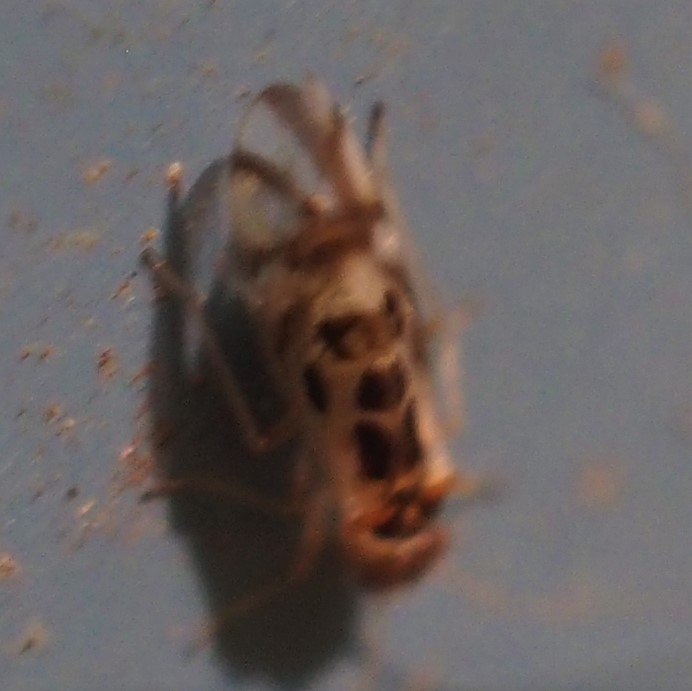
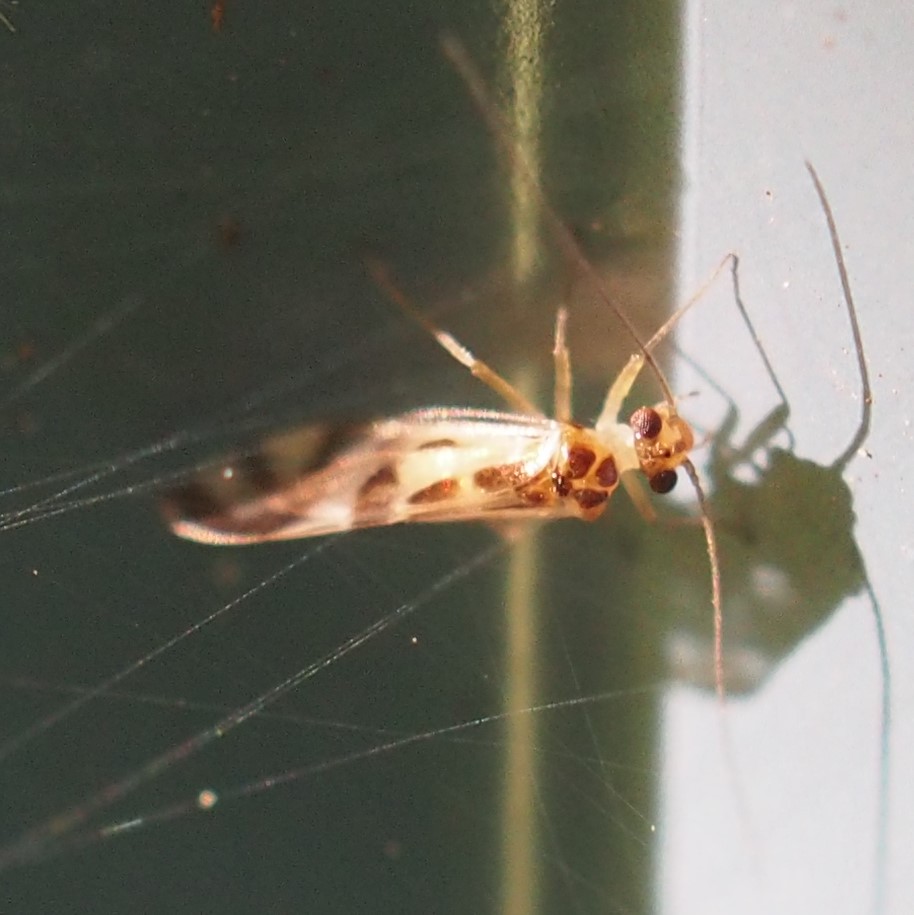
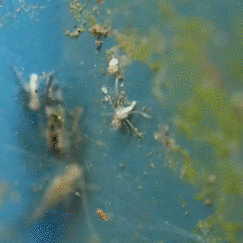
So we move to the Flies. The first two show a Crane Fly. Then we see a big blue Fly, maybe a Bluebottle?
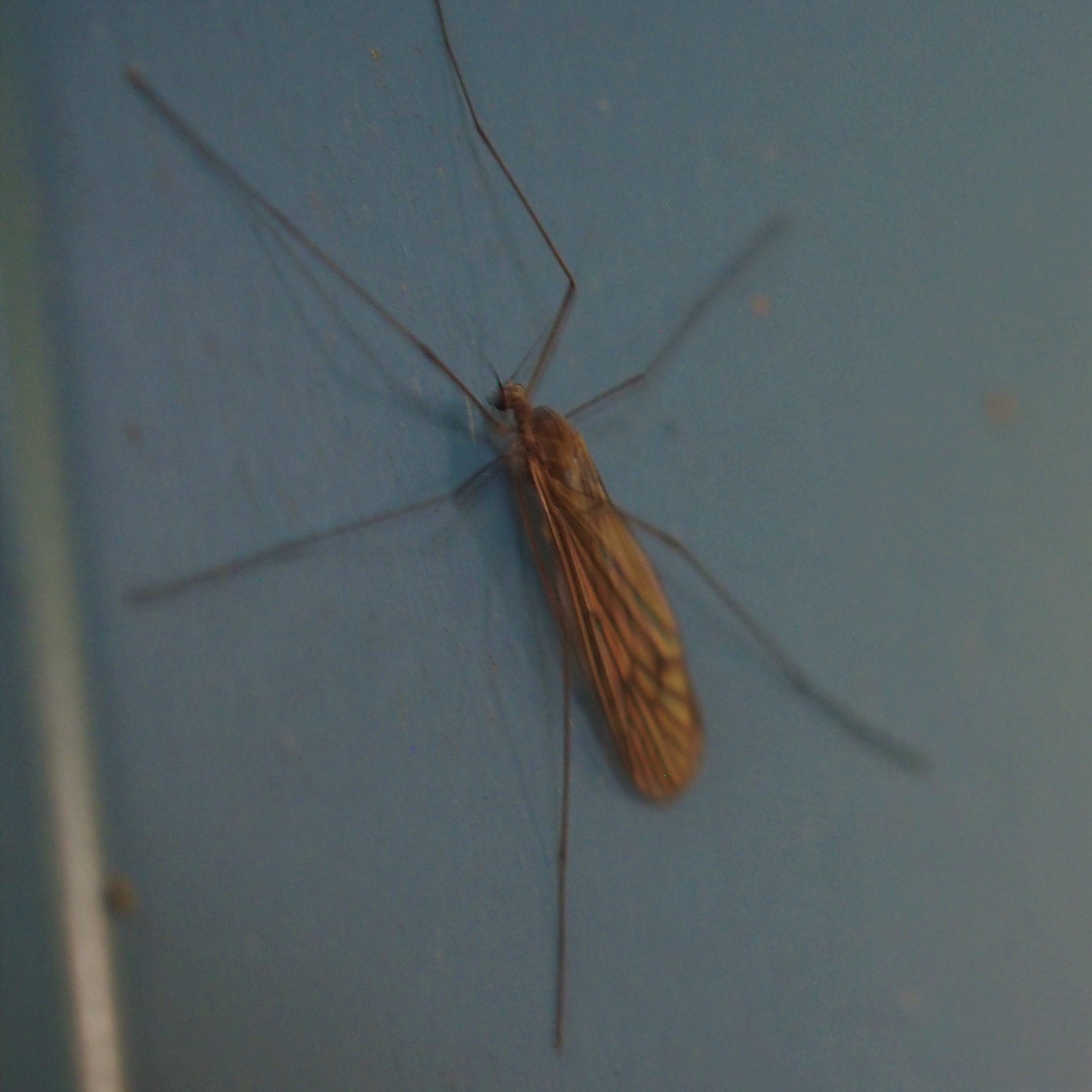

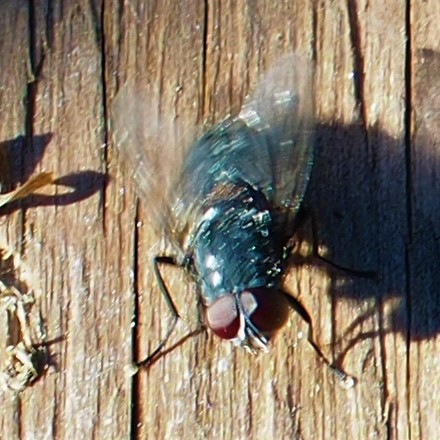
Here we have what looks like an Asian Bush Mosquito (pictures 1 and 2). I don't know who number 3 is, but look at those GREEN eyes!

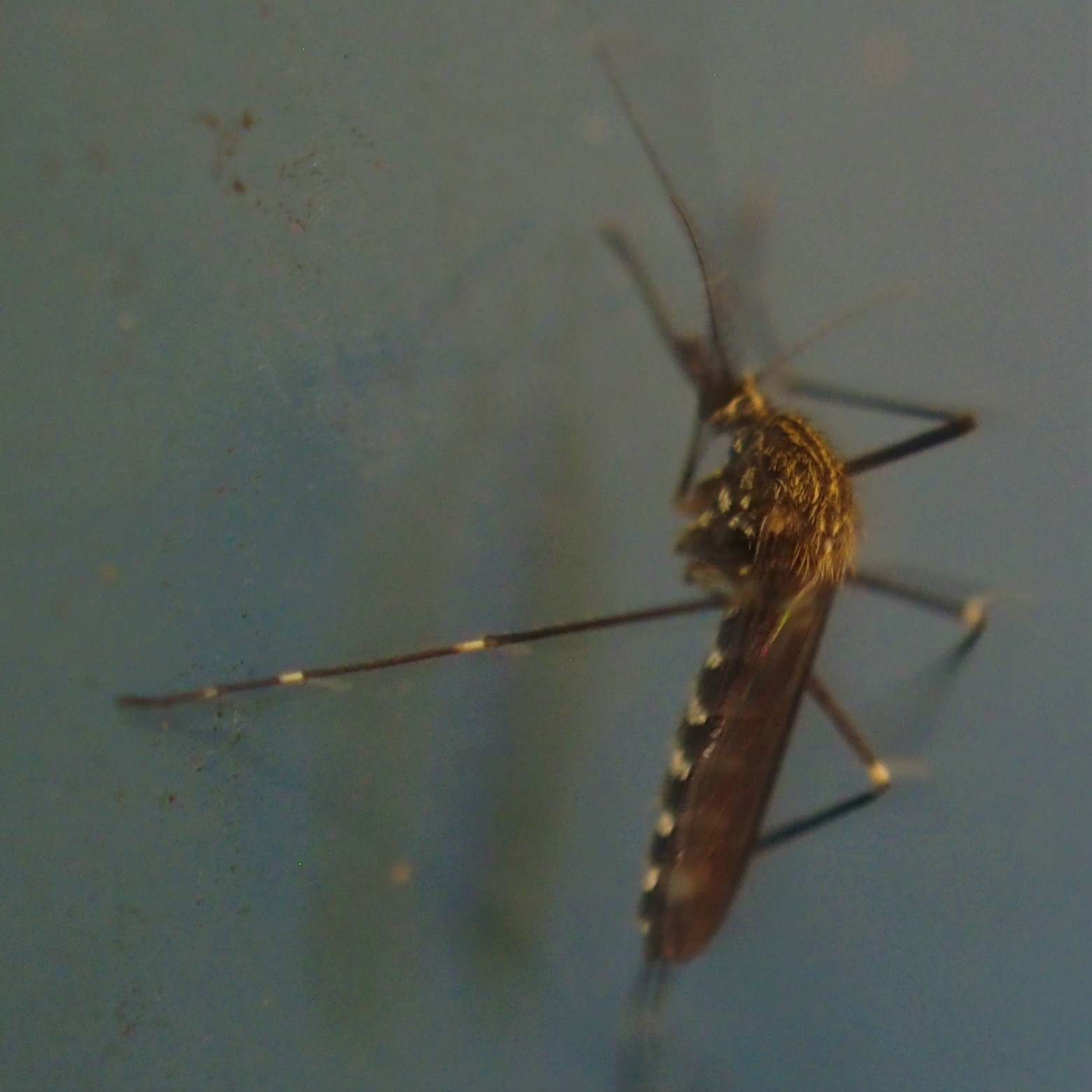

This Fly doesn't have a big proboscis, so it isn't a Mosquito, but a Midge. Look at these WIPS - Chris Angell of iNat says, "Iridescence and Wing Interference Patterns look similar because they're both caused by diffracted light waves interfering with each other. However, iridescent colors shift depending on what angle you're looking at them, while WIPs are actually stable, as long as you have a dark enough background for them to be visible." These patterns are WIPS, even though to folks like me they look like iridescences at first. I didn't know if these were caused by my imperfect use of the new old camera, but Zachary Danko of iNat says, no, the colors are caused by films in the wings themselves, and you can't influence them just by adjusting your picture-taking.
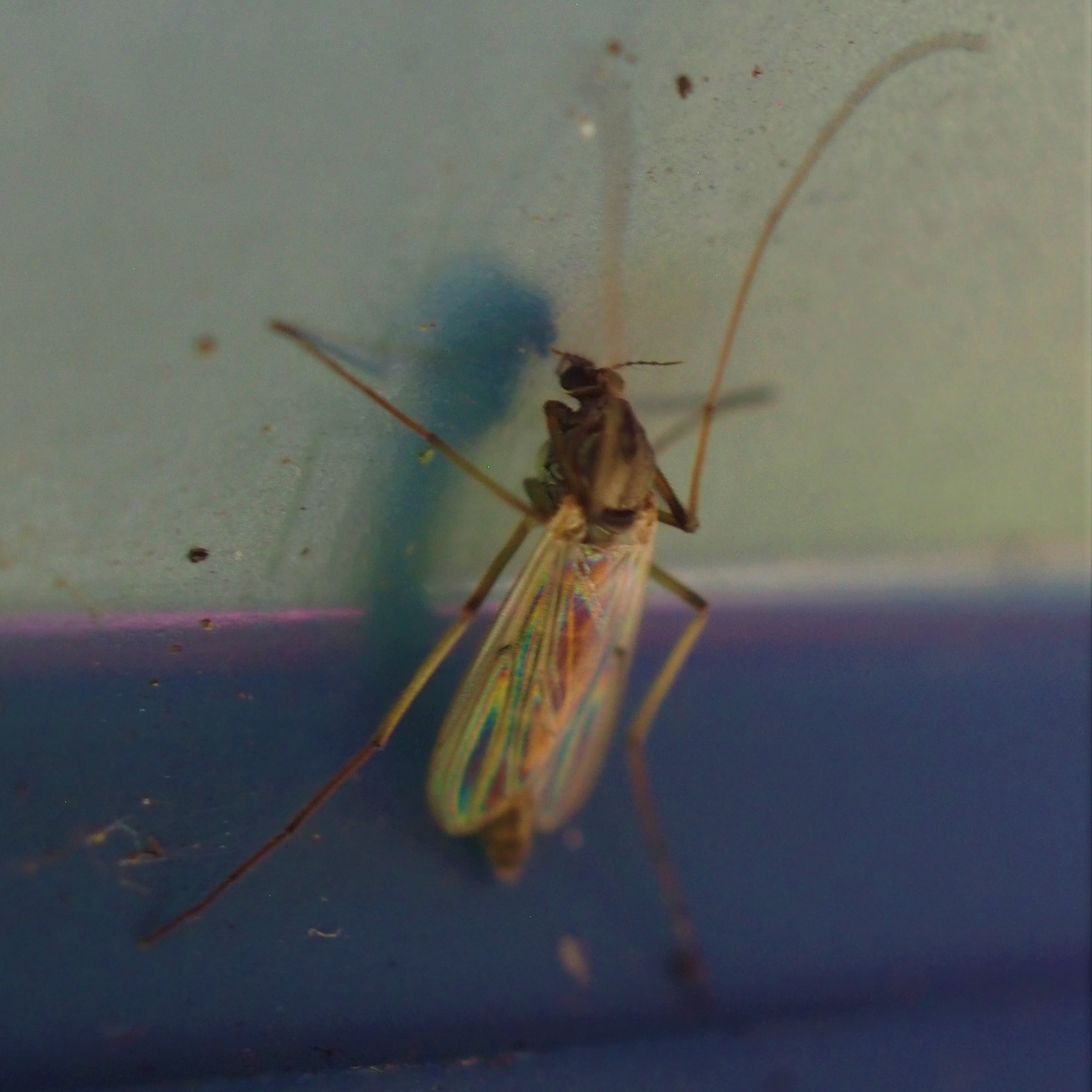
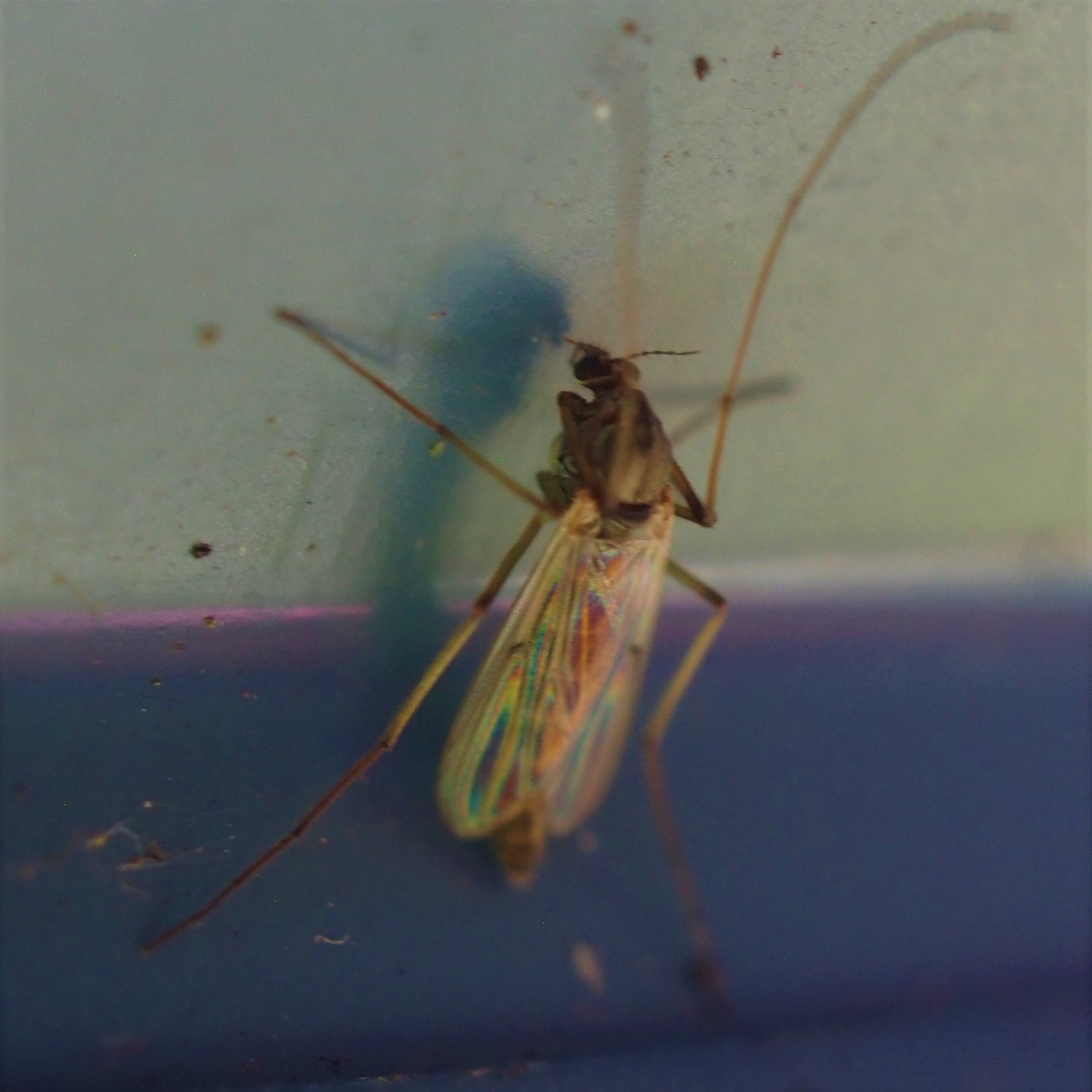
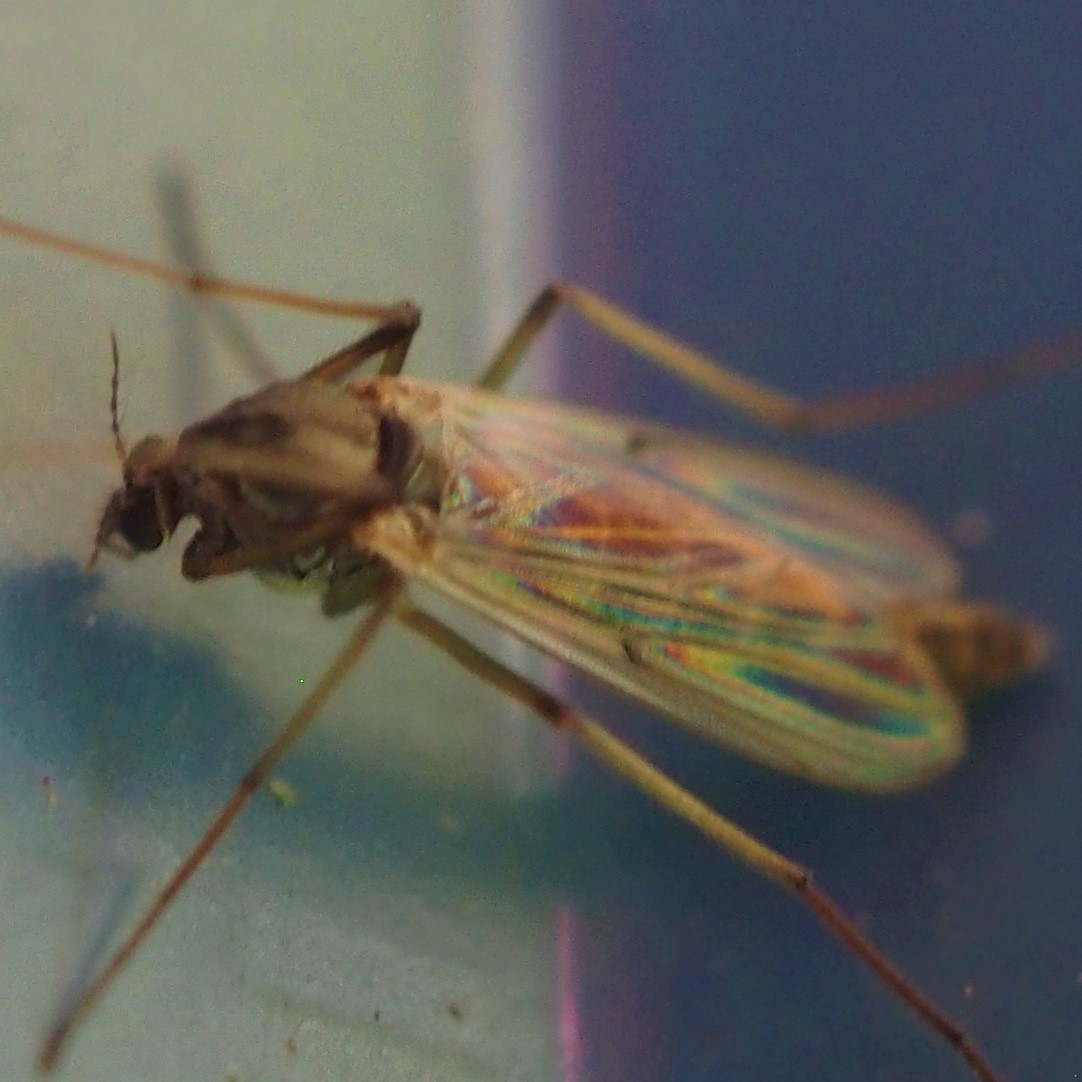
Here is a Smoky-winged Woodlouse Fly, and it seems to be a male as its wings are solid Black (females have white wing-tips)..
 10 21 22 1.jpg)
 10 21 22 2.jpg)
 10 21 22 3.jpg)
This Fly (two views) is in the genus Suillia and may be S. plumata. The third one was taken by Chaim. Nice one!
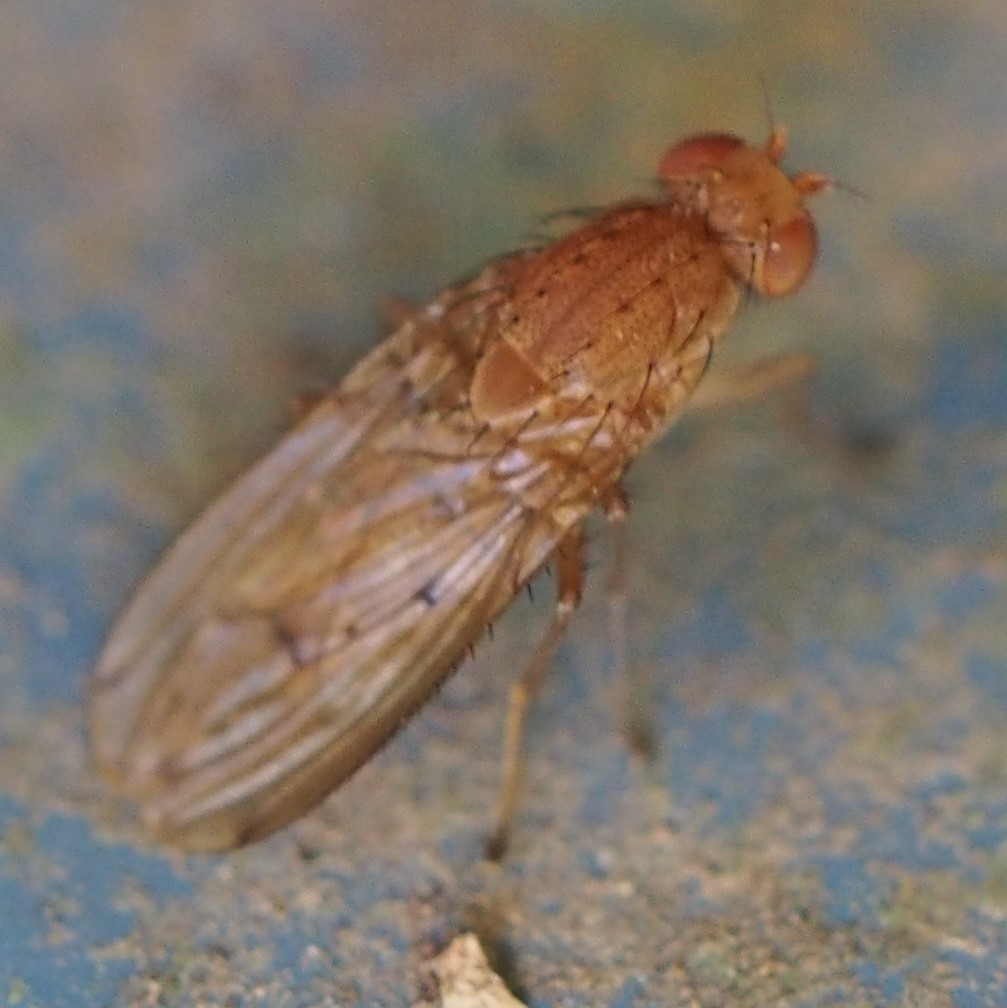
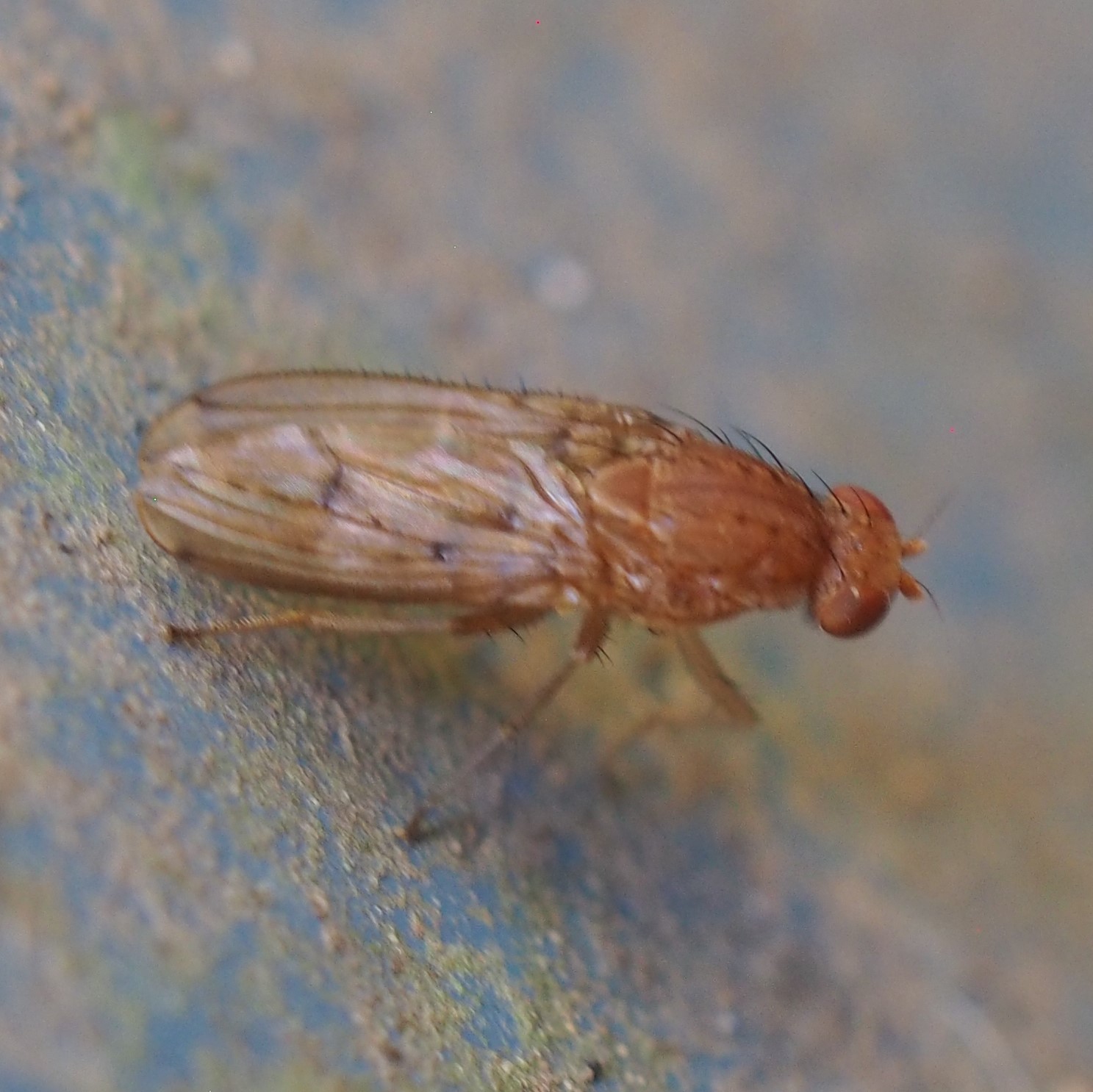
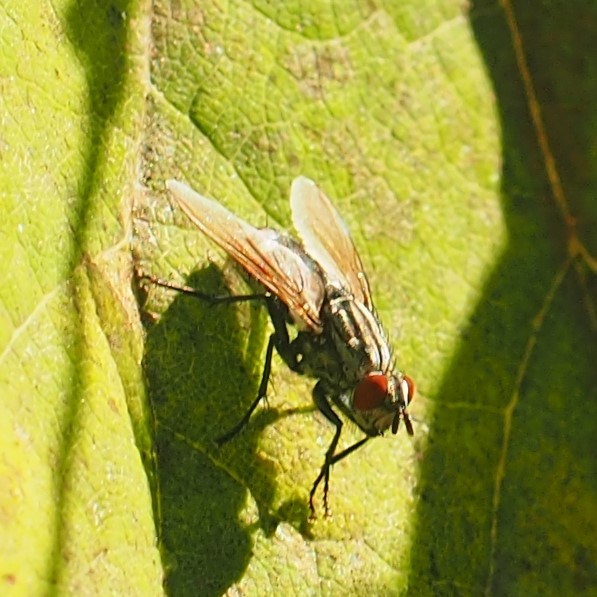
Remember the Pug Moth caterpillar from last week? Here is a rerun. Today I found a similar one, also in an Aster.
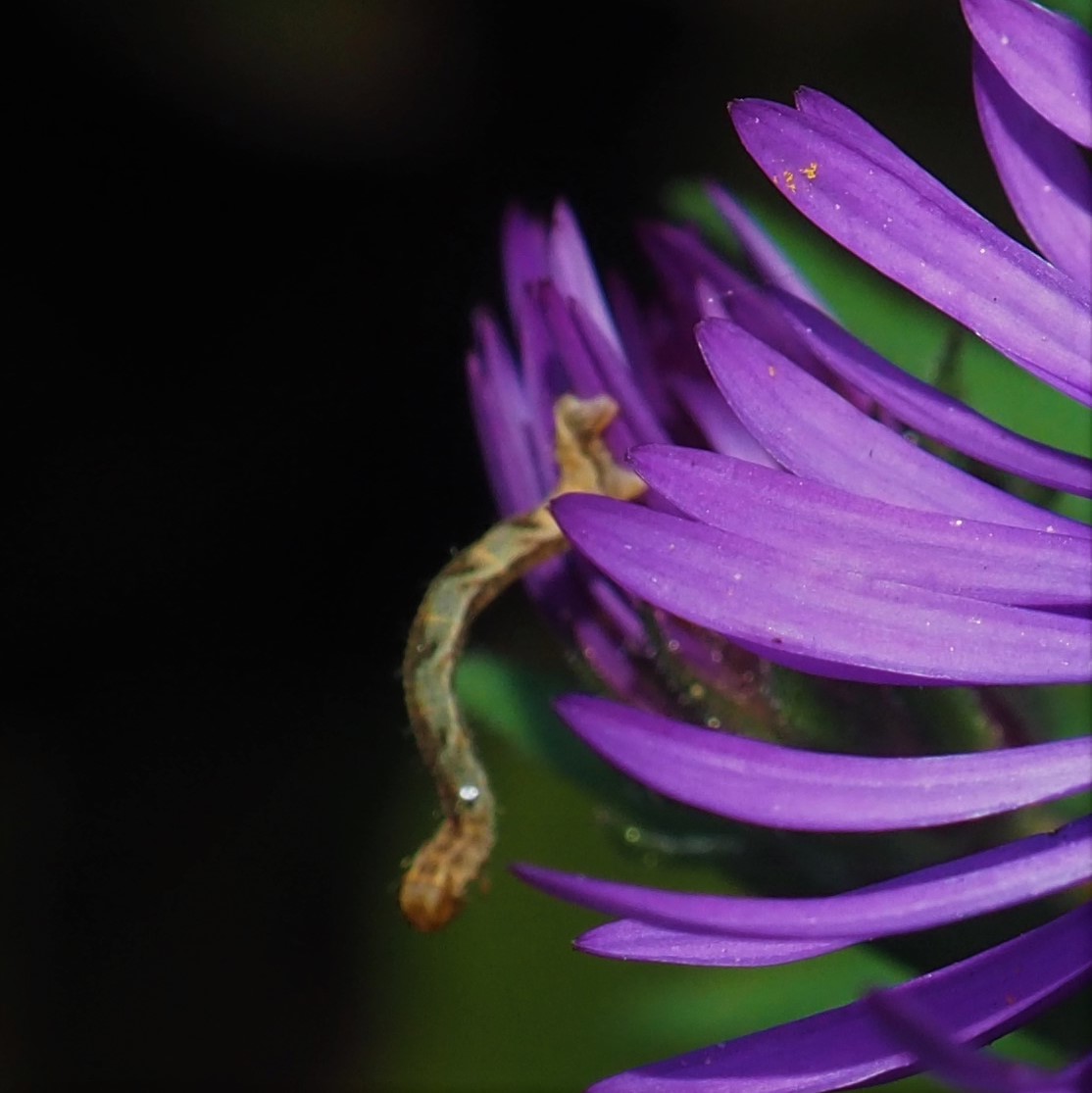
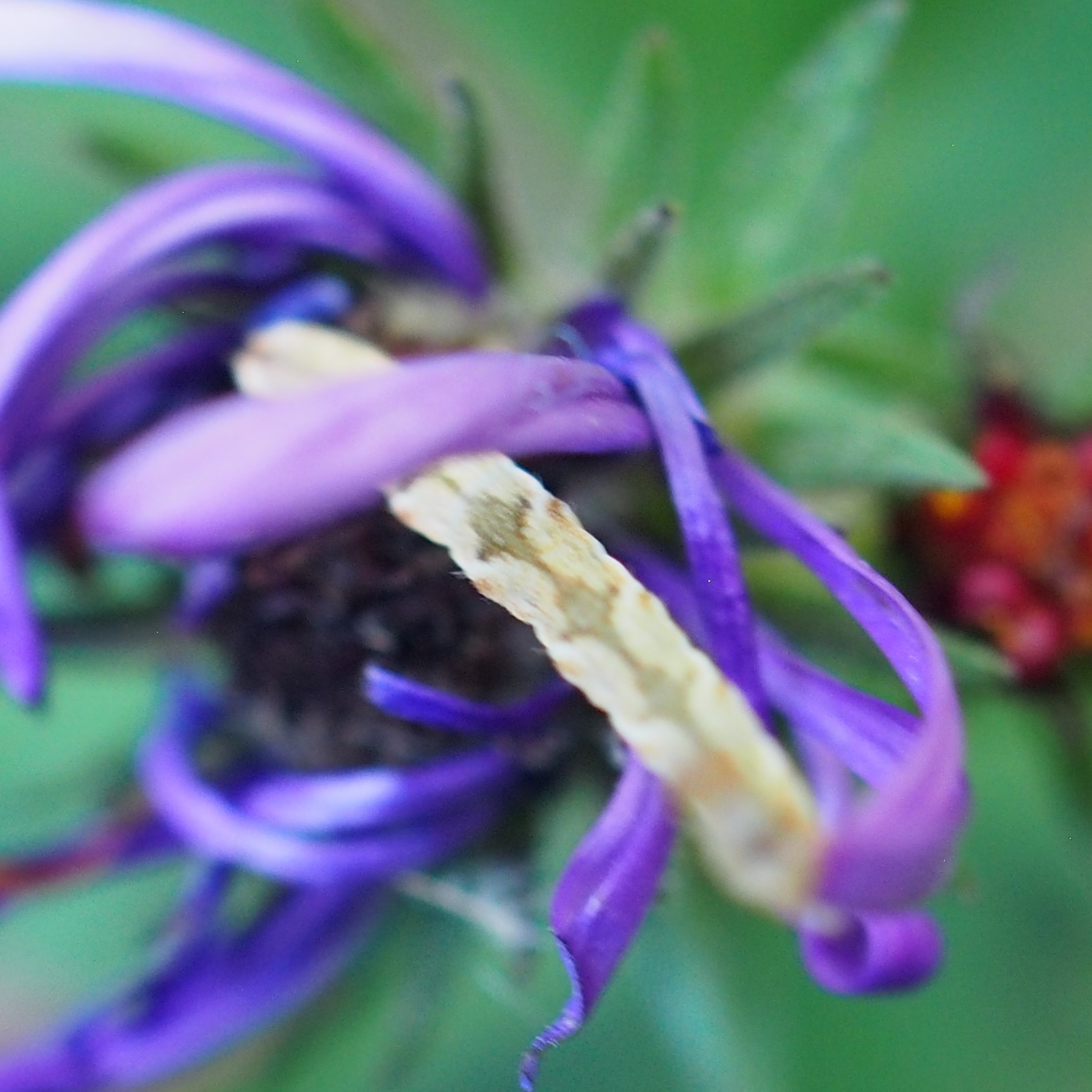
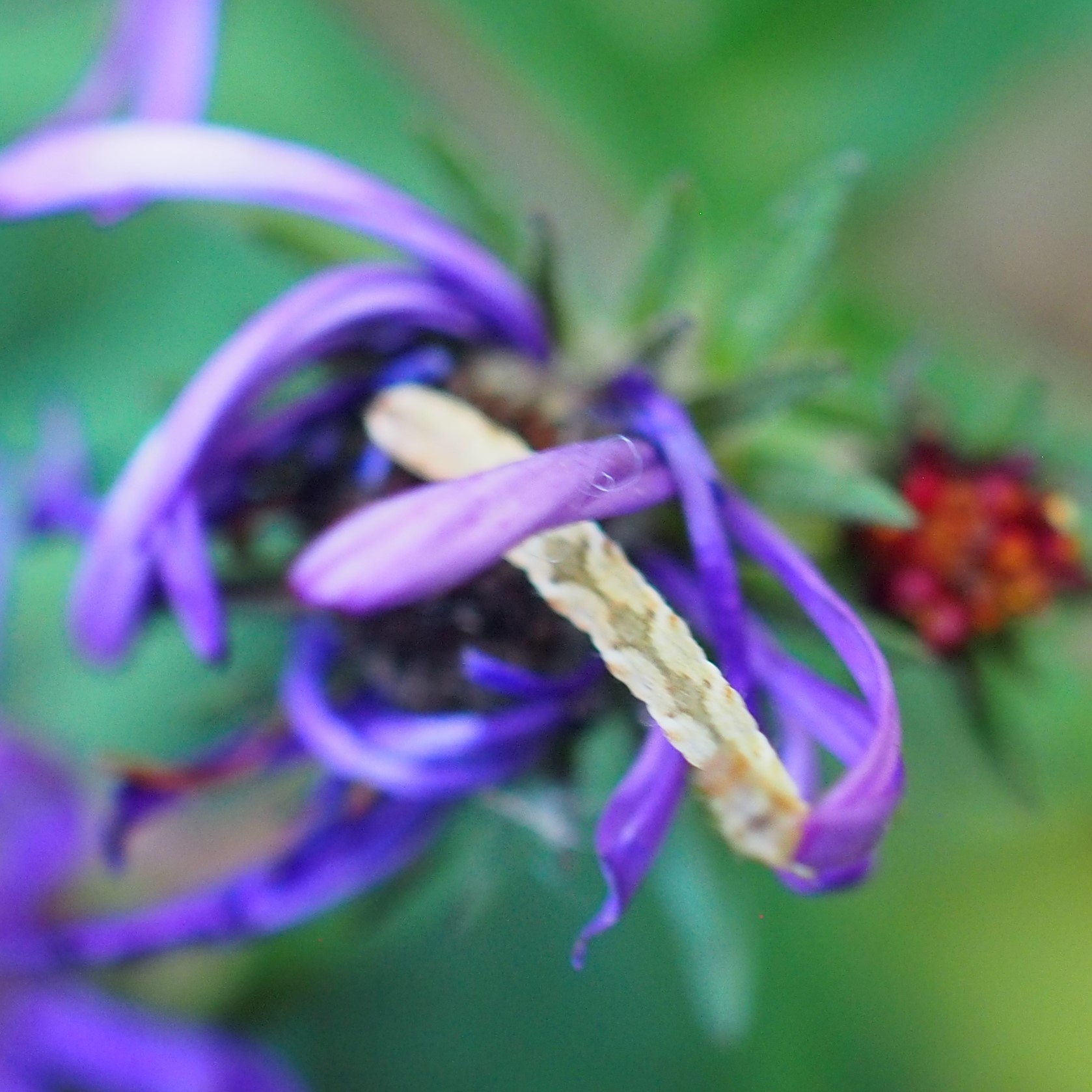
I think it's time to do a Color Walk. We start off with some of the remaining yellow Goldenrod, purple Asters, and one pink Aster.
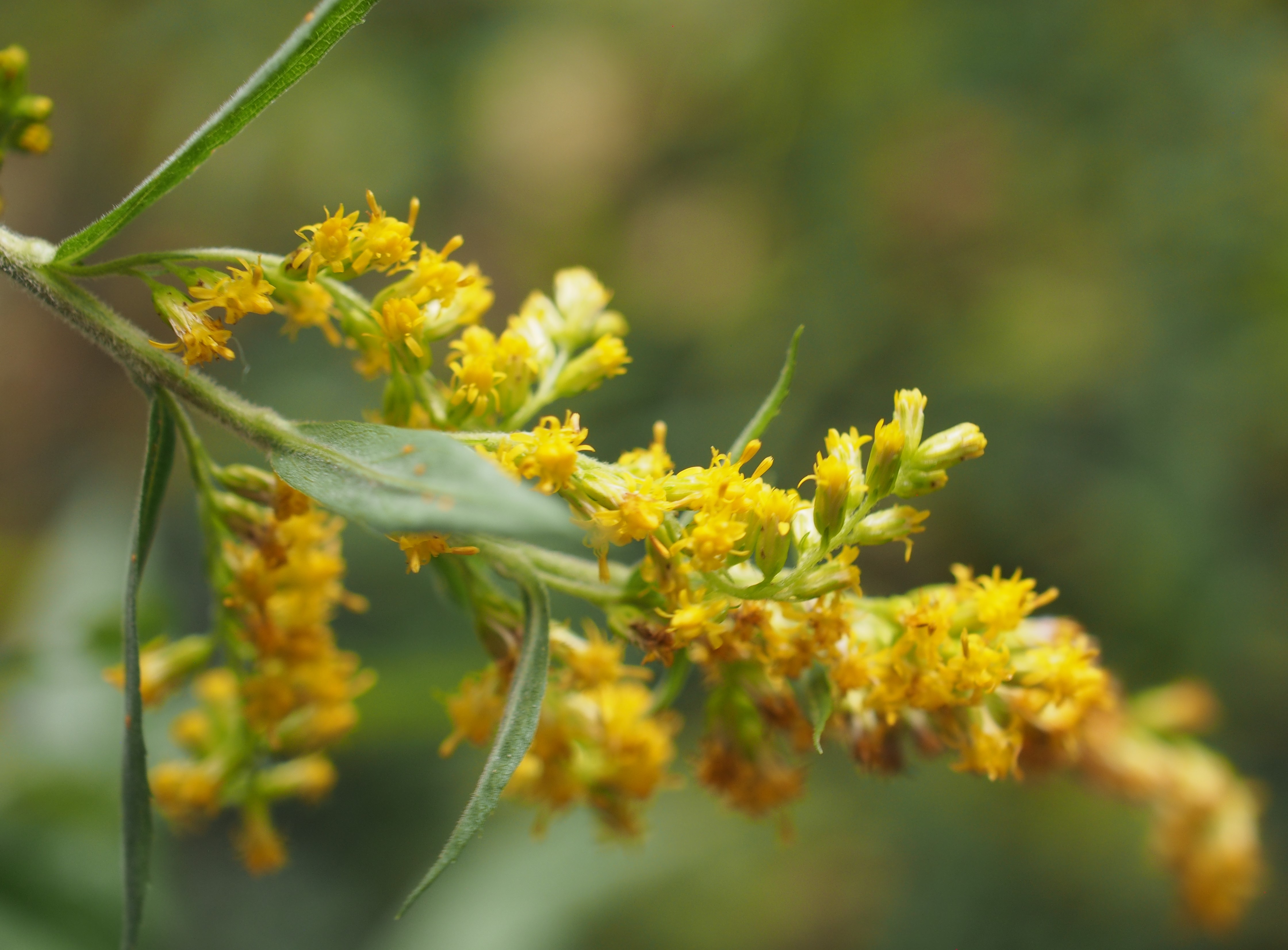
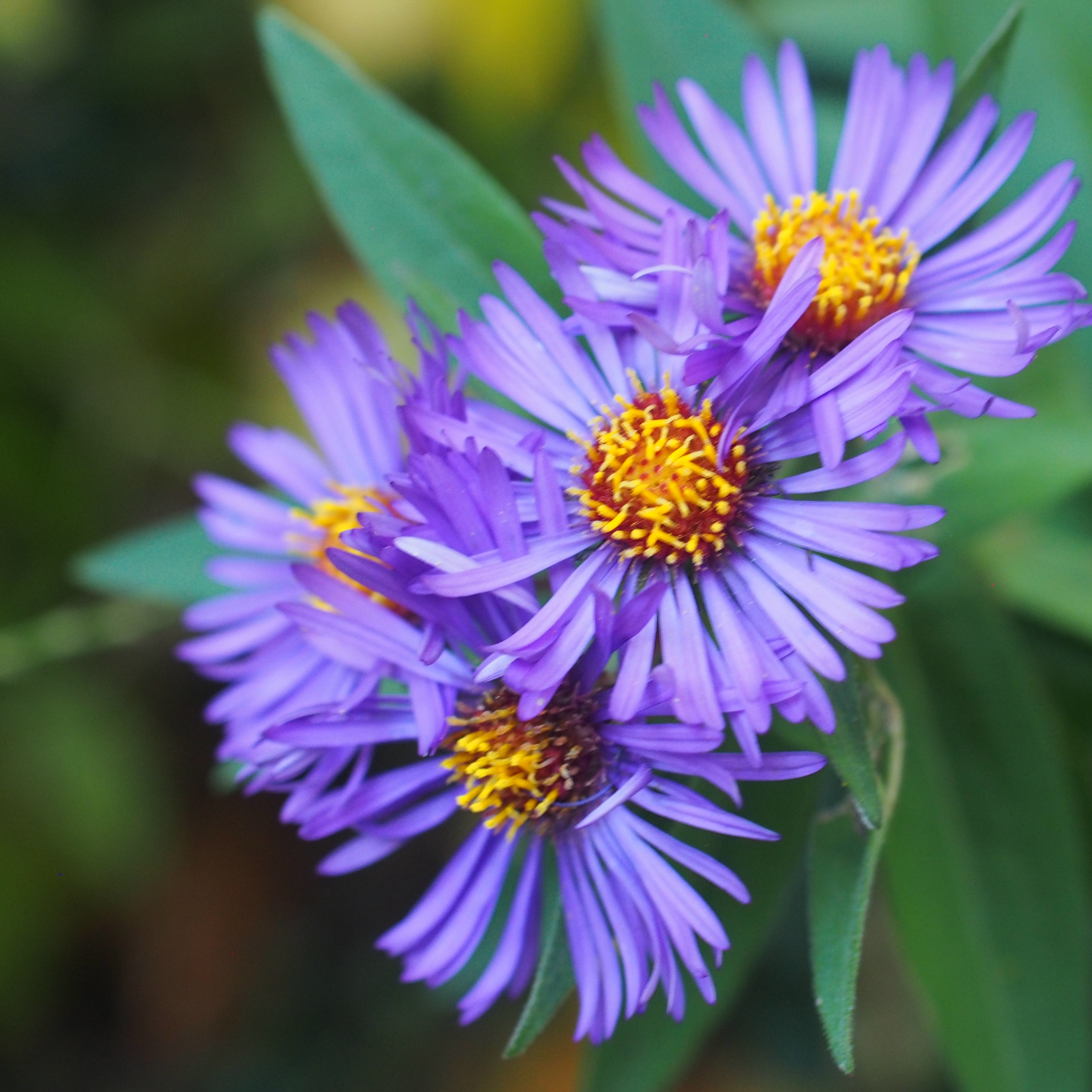

The bittersweet is hiding in the midst of some Euonymus. Those Coralberries that were so beloved of the Fraternal Potter Wasps are now ripe and will keep their color all winter till the birds are finished with them. And the Dogwood leaves are a bright but subtle scene.
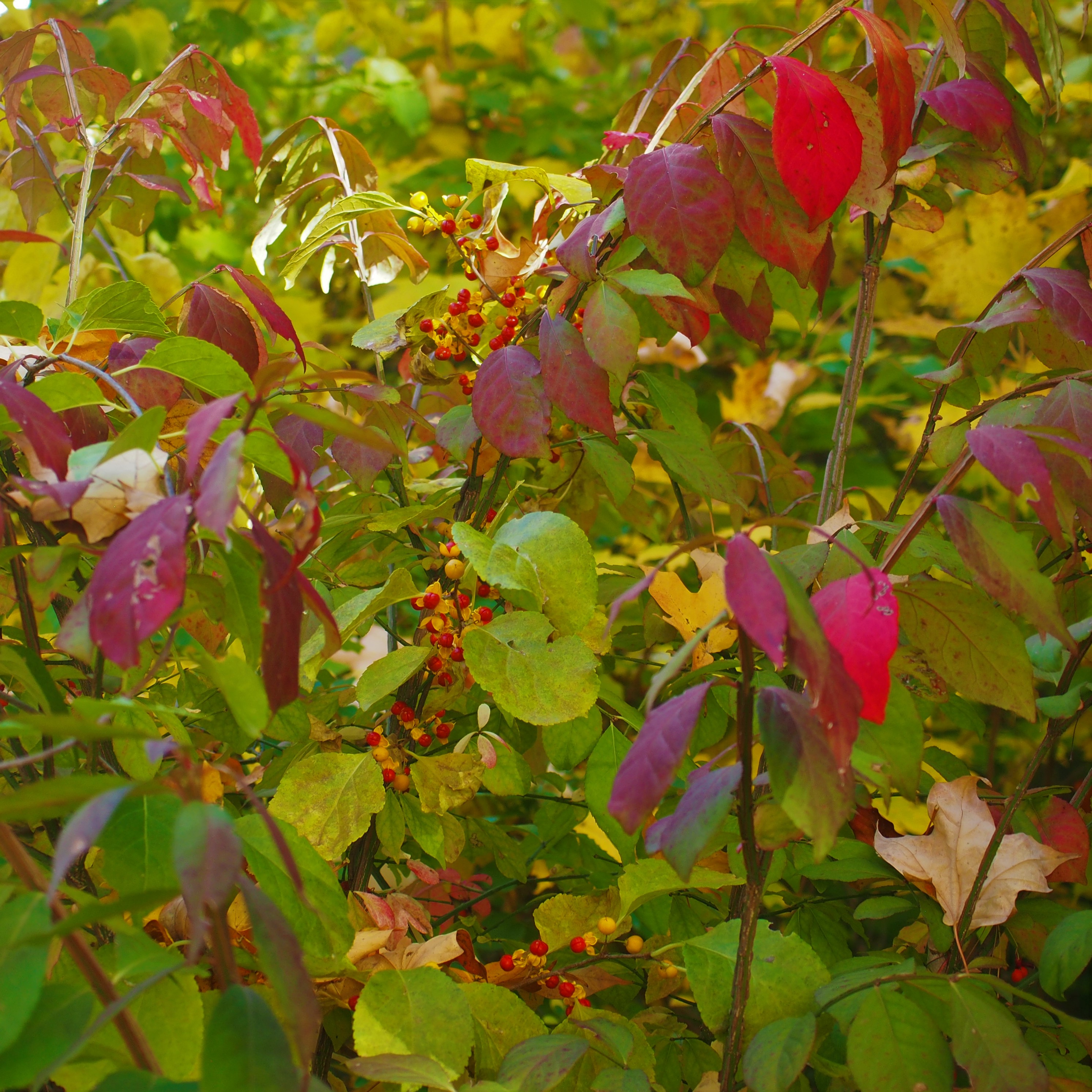
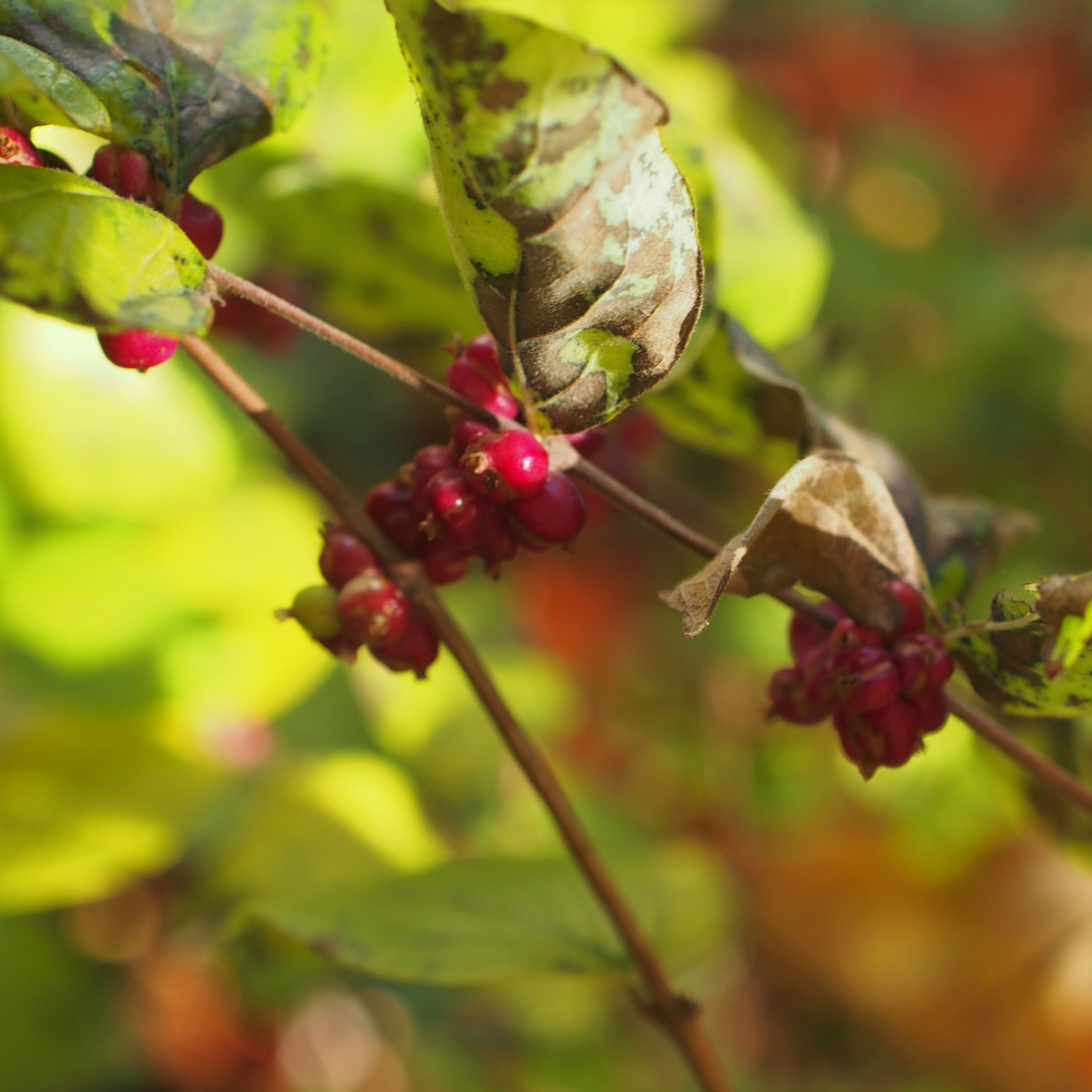
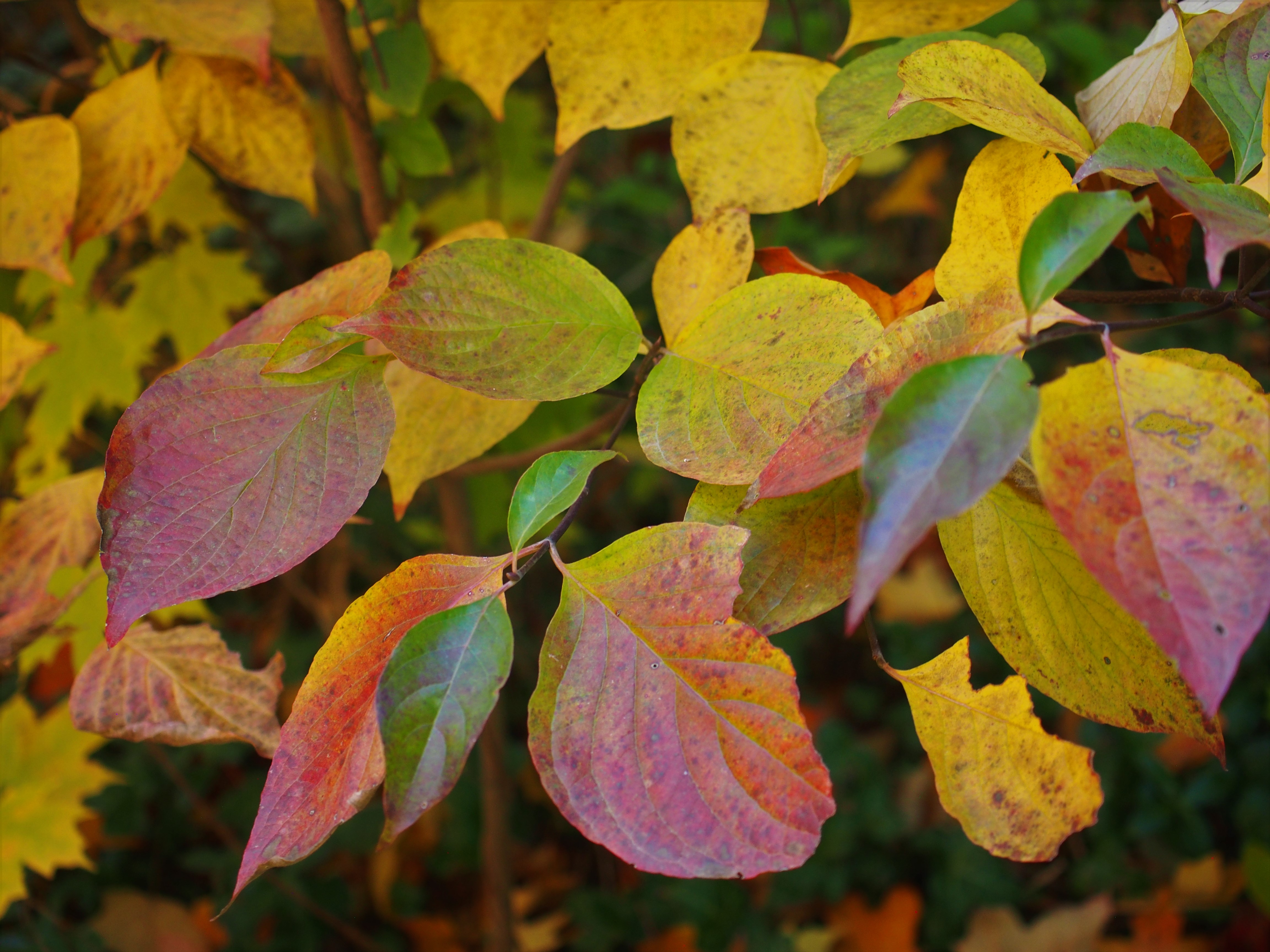
The Euonymus is more and more brilliant. At the right it covers the entrance to the house.

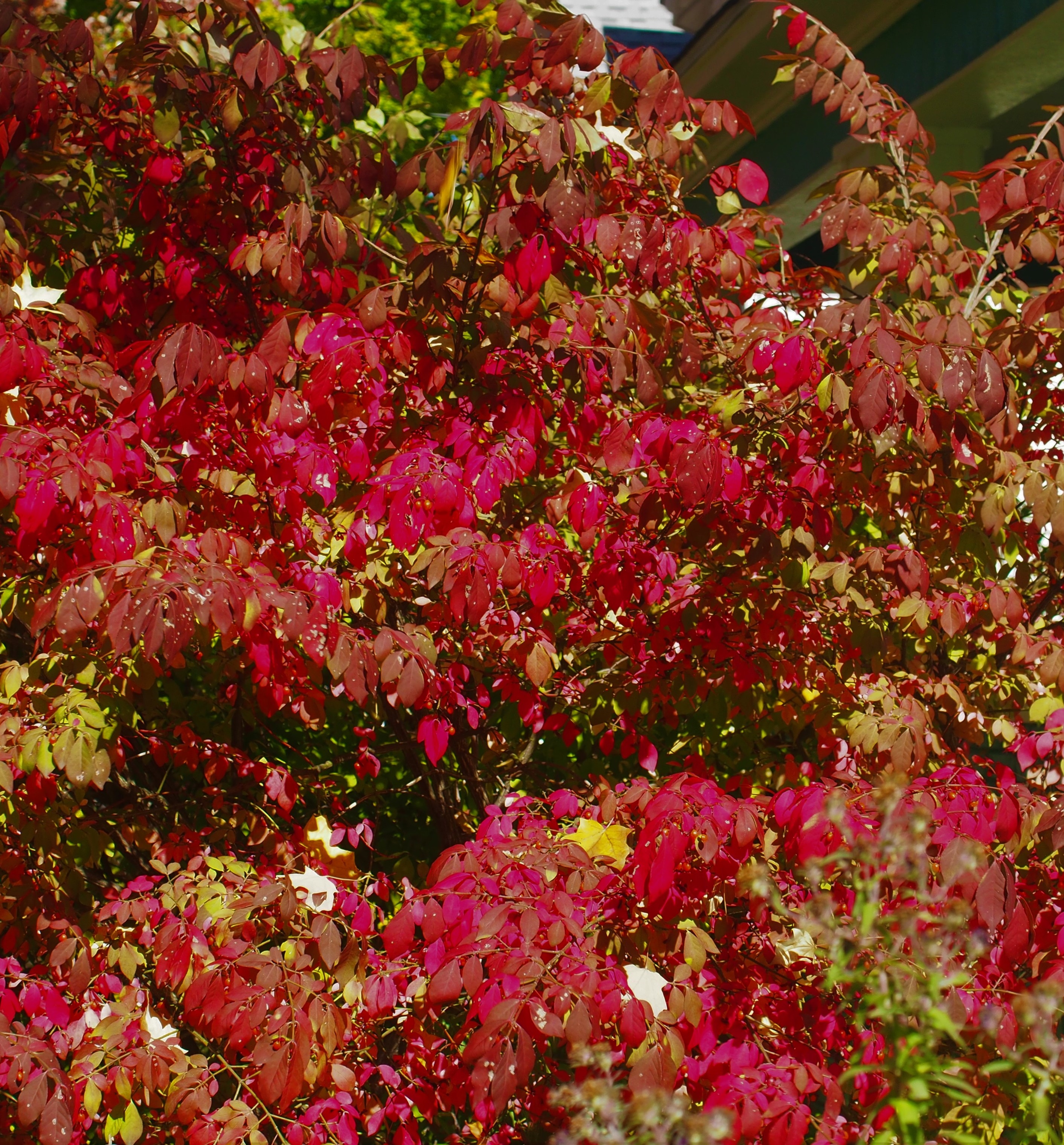
The trees turn colors as you face northward.
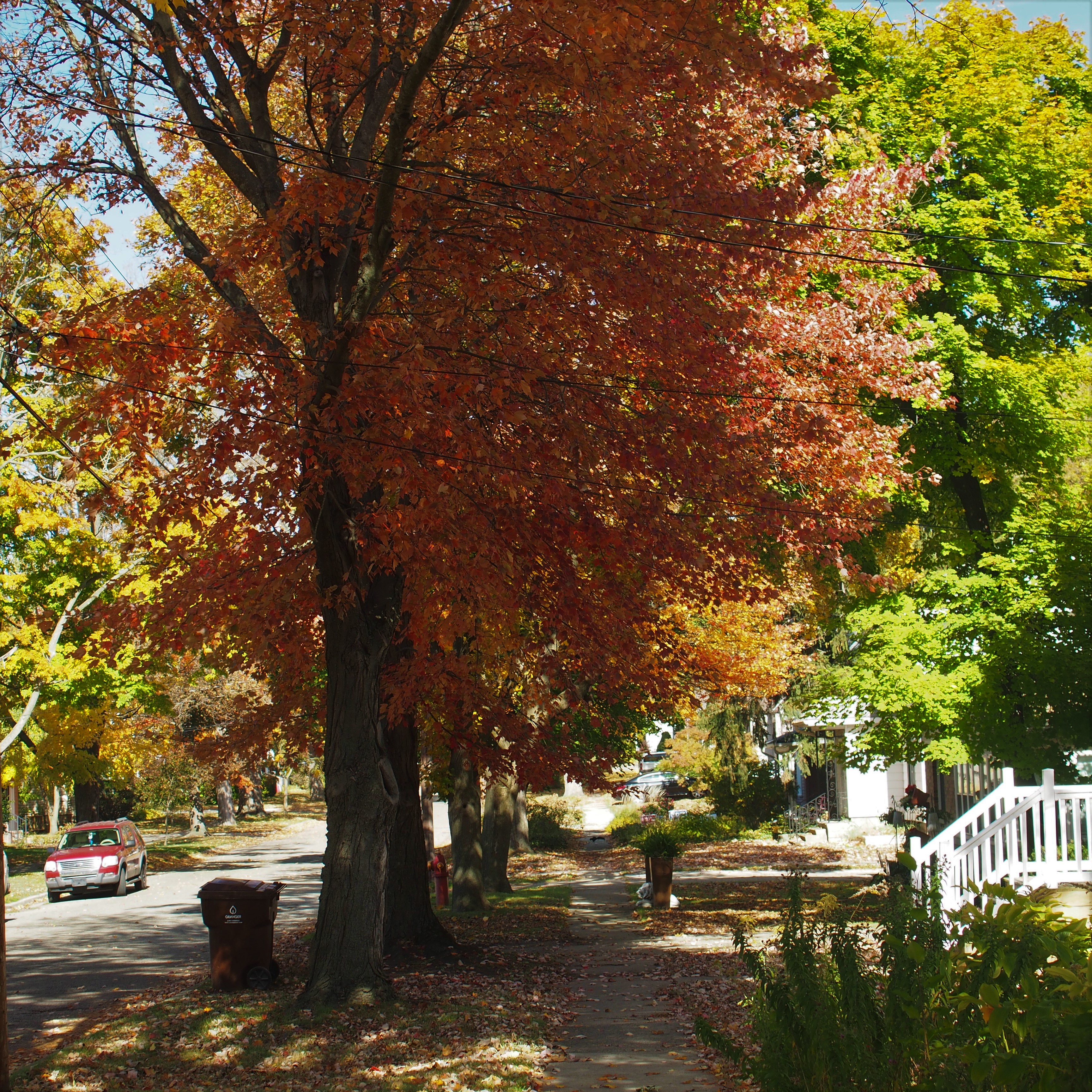
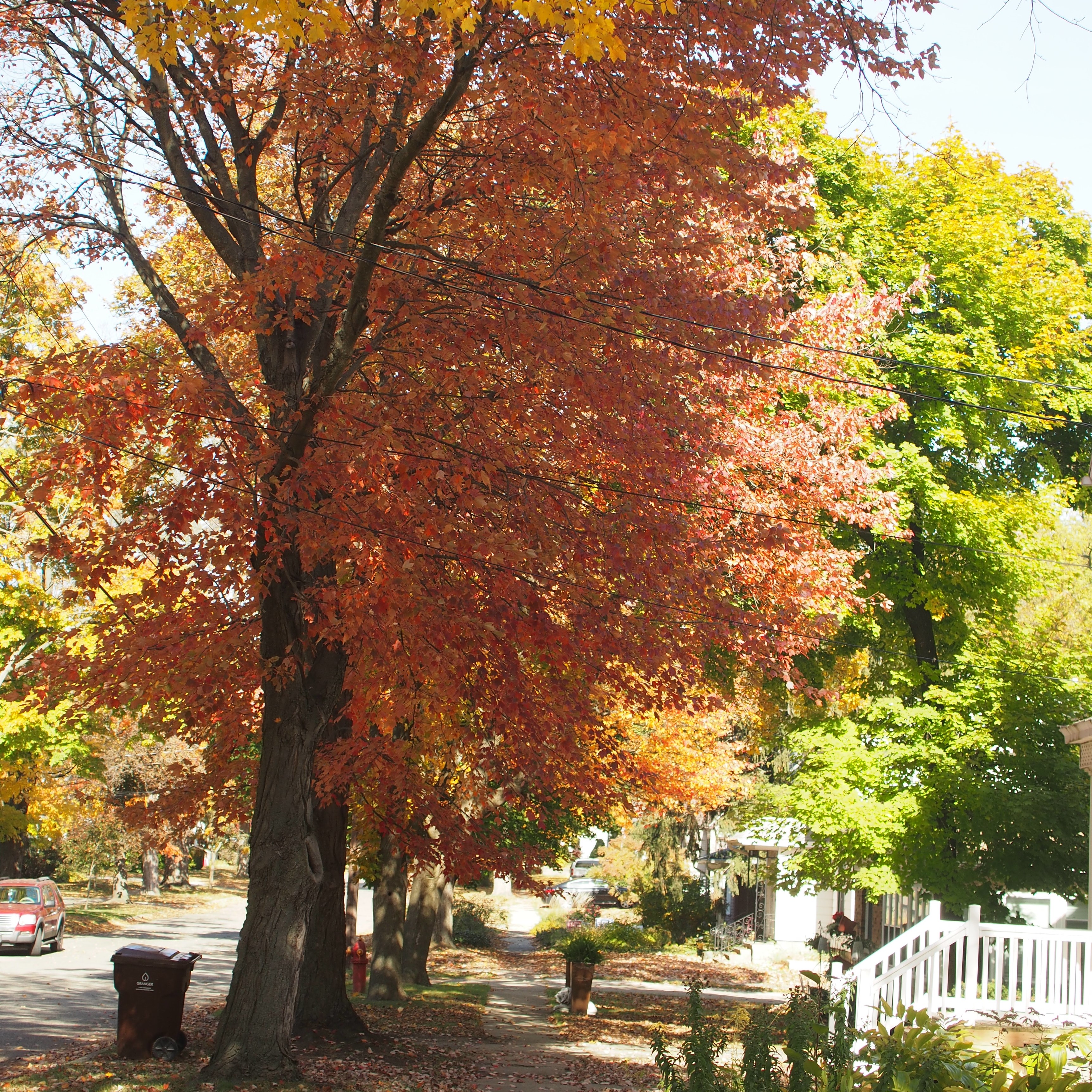
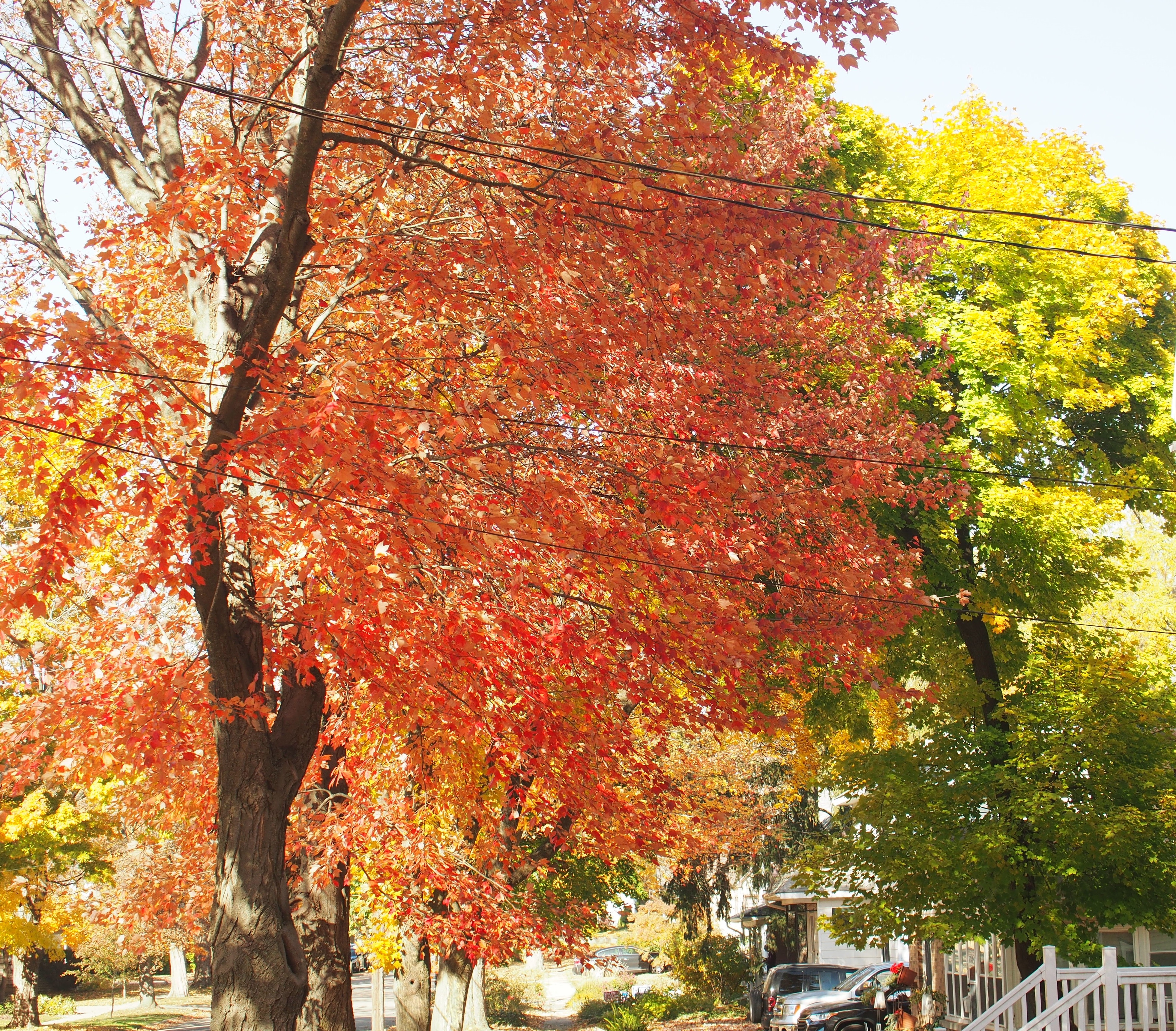
While relaxing from all that color, I see one of our Eastern Grey Squirrels who seems to be looking for something on the ground.
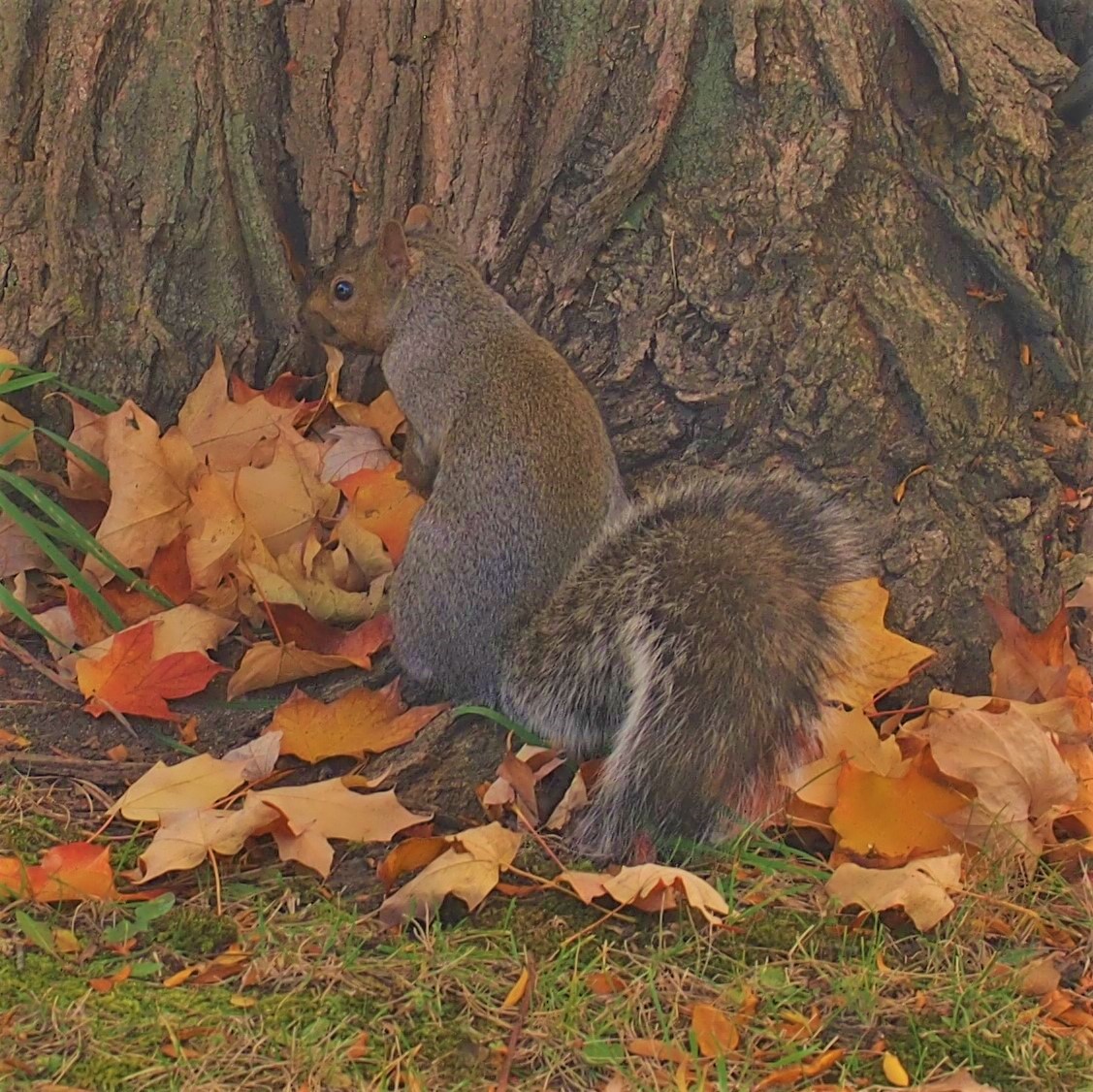
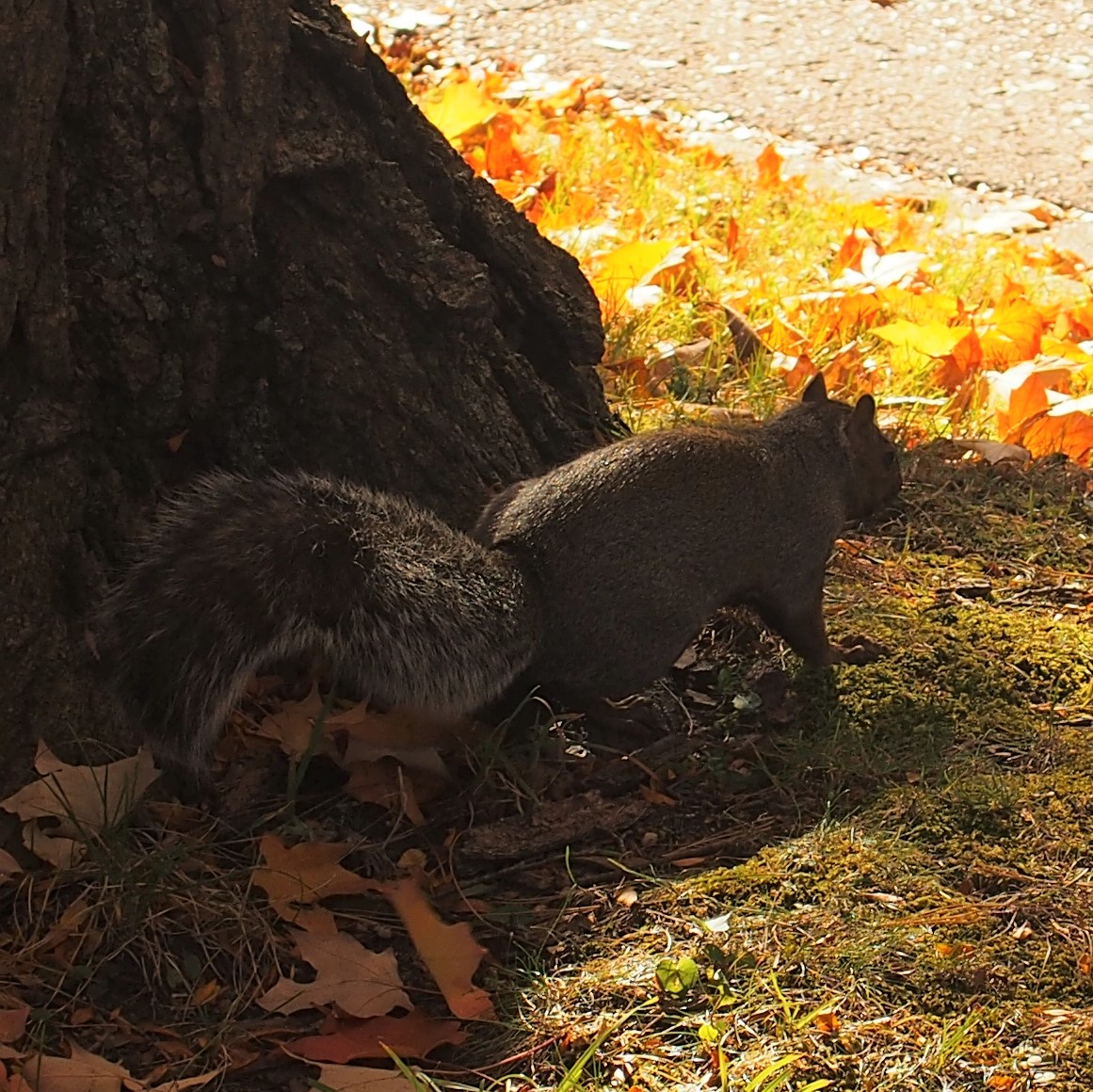
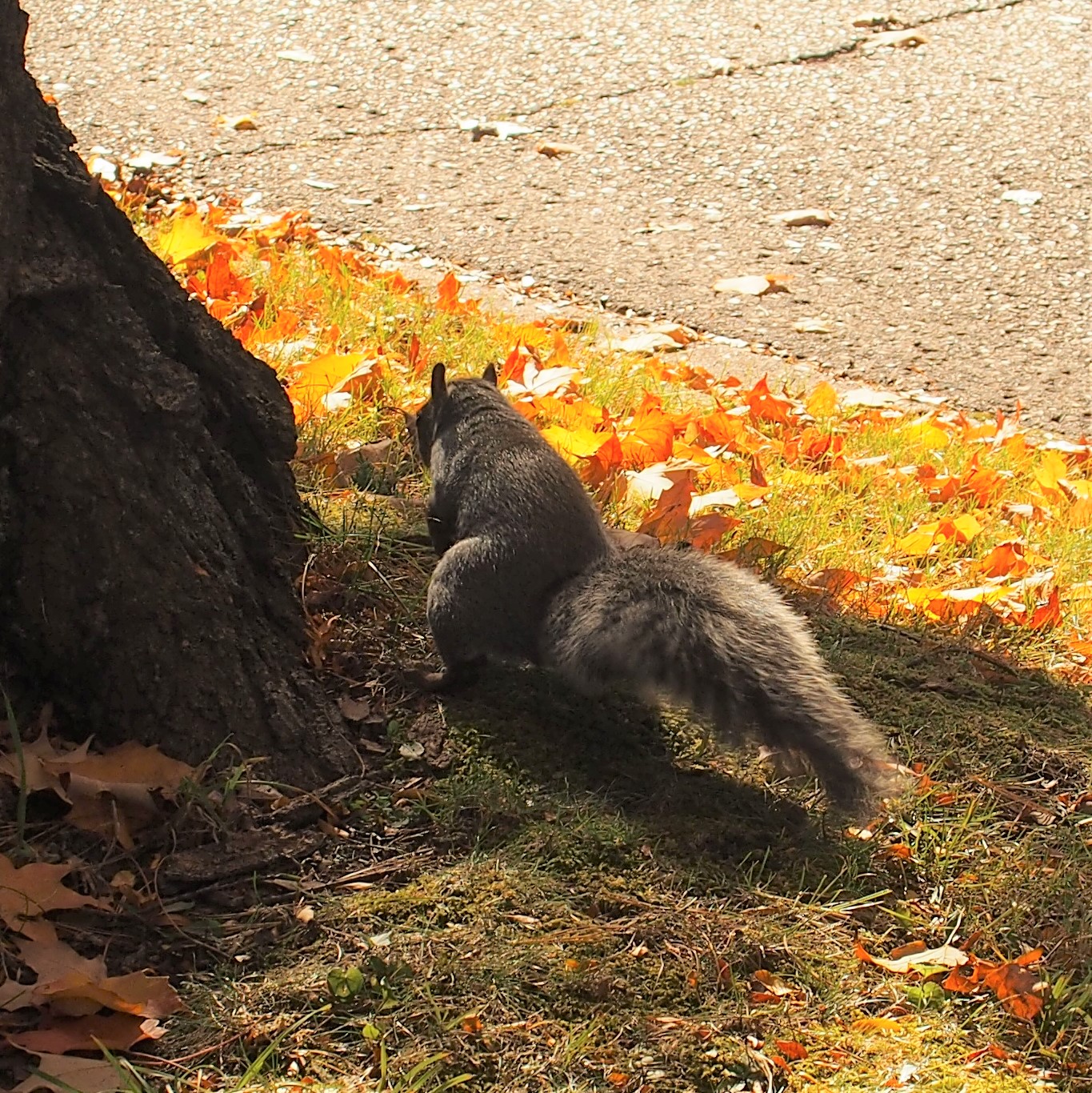
Since we're into the S's, let's start looking through the Spiders of the Week. Here's our Common House Spider. I didn't see its friend the Cellar Spider this week, but here's a Cobweb Spider.
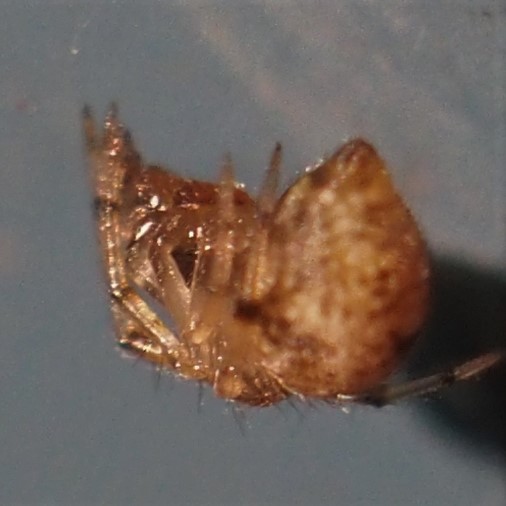
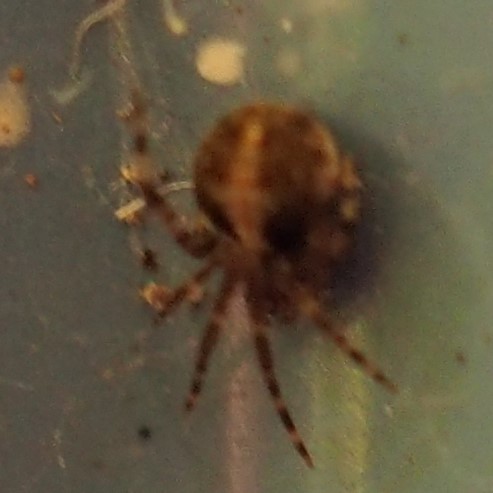
This little Spider was on the brickwork in front of the house this afternoon. I think it's the Bold Jumping Spider.
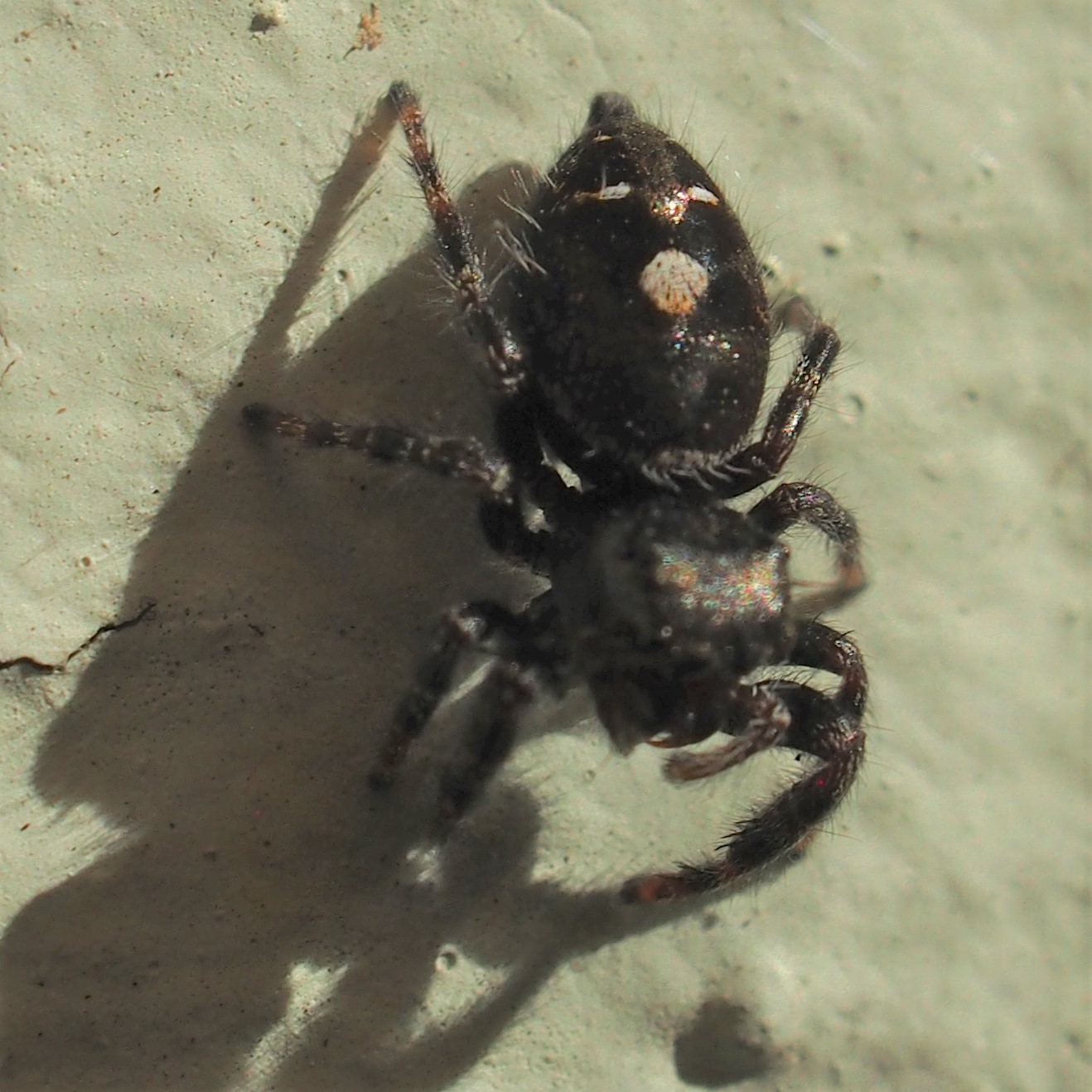
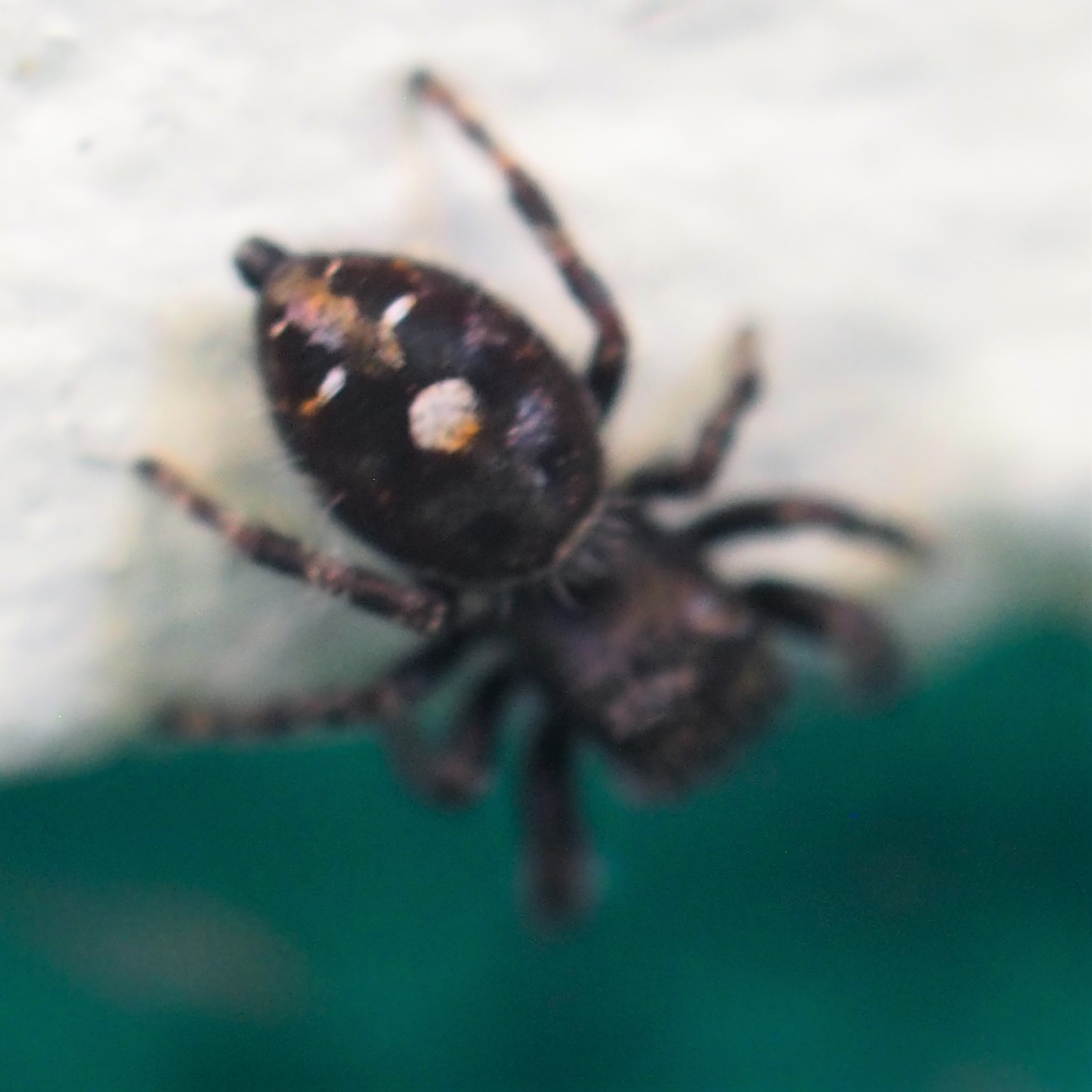
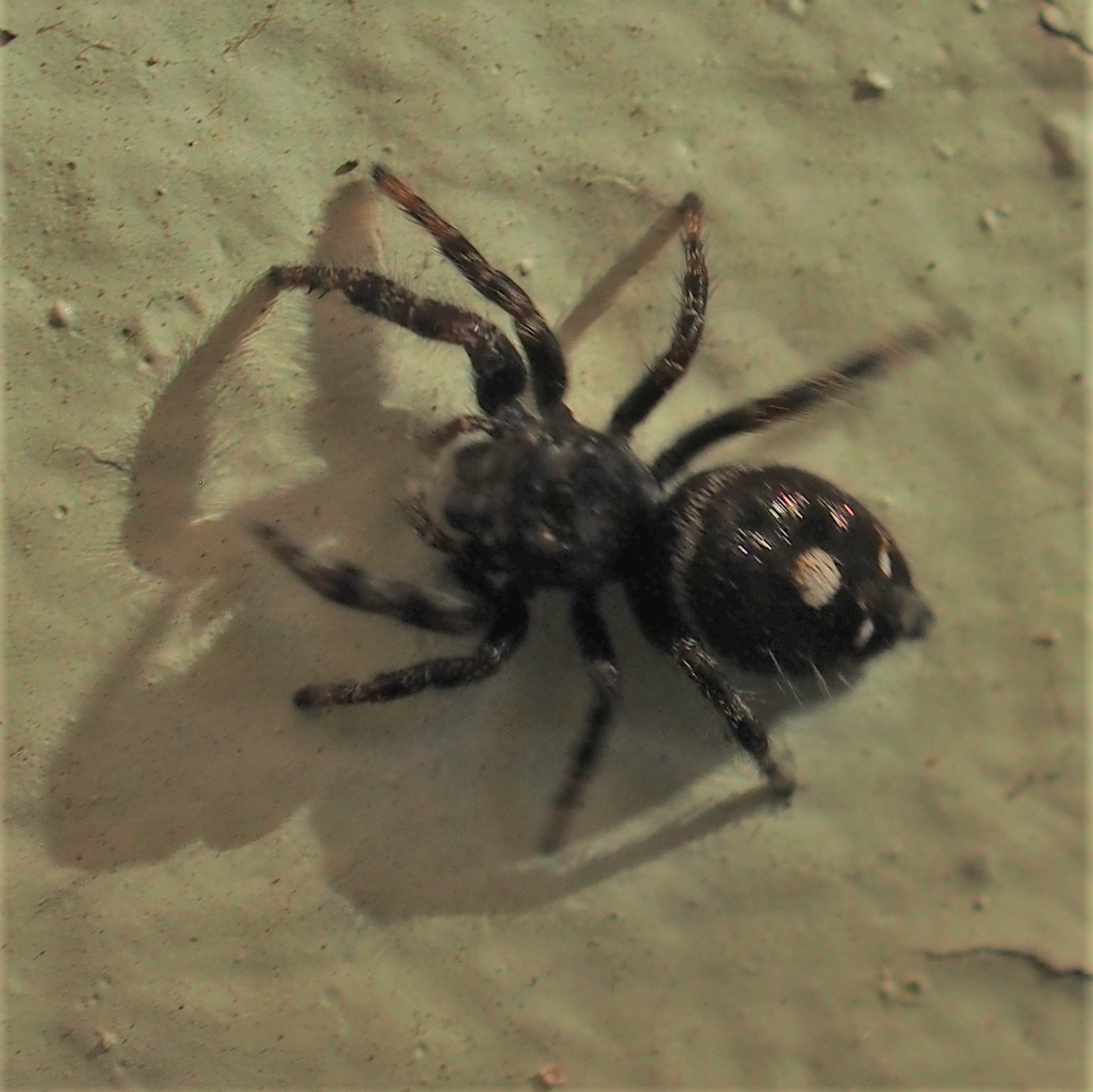
This Jumping Spider (two views) is a mystery to me. The third one is one of my favorite Jumping Spiders, Naphrys pulex.
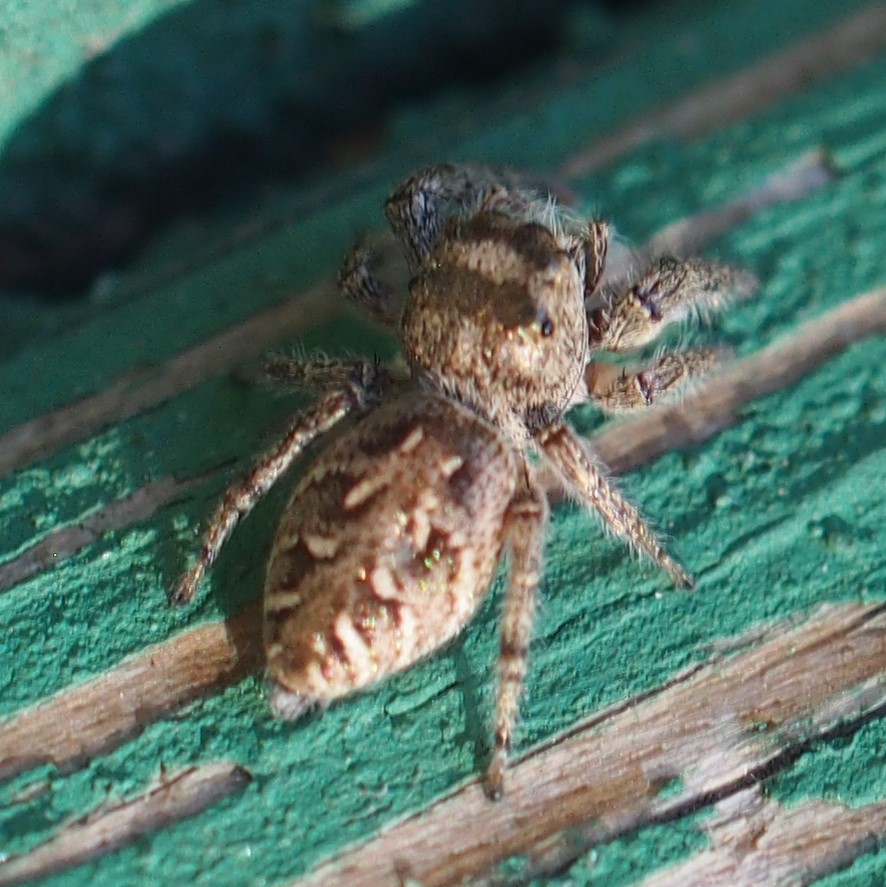
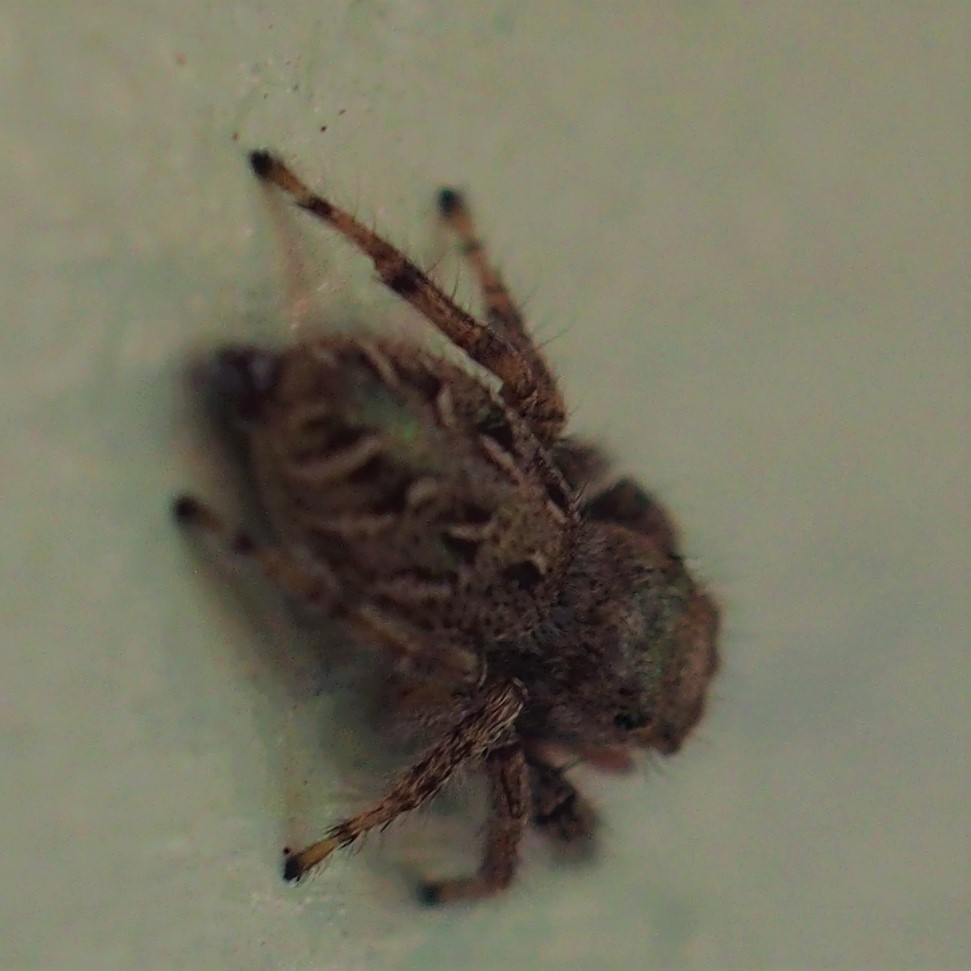

This little (Jumping, I think) Spider was running around on the garbage can. The third Spider here is a typical kitten-faced Jumping Spider with the great big eyes. Click a couple of times to really see it!
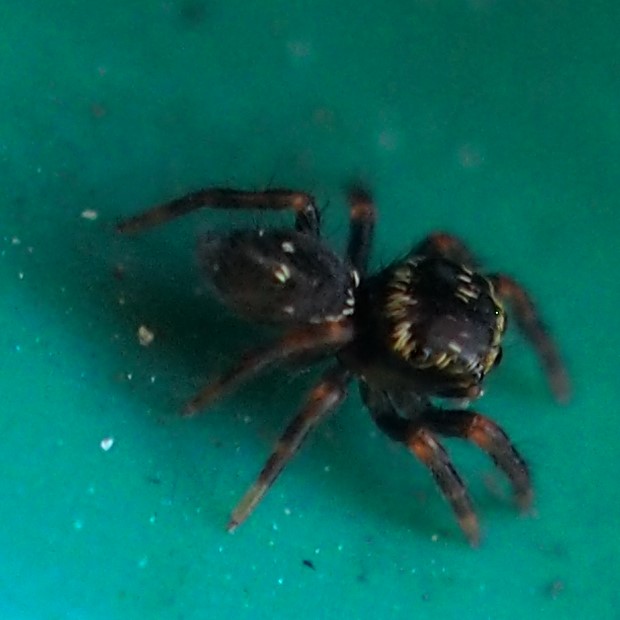
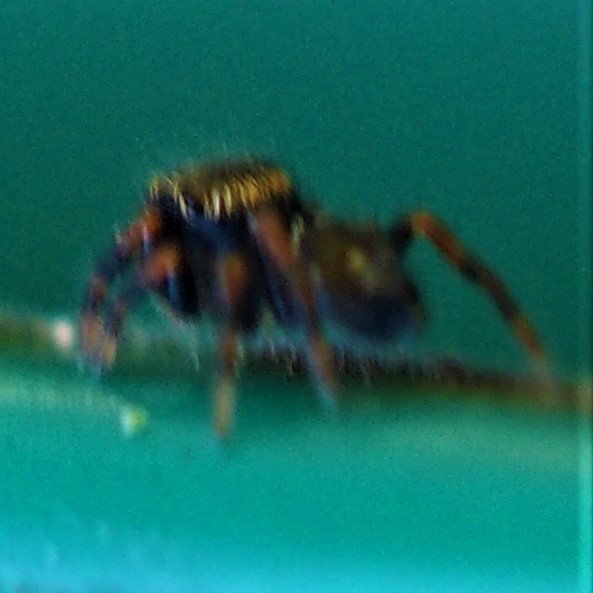
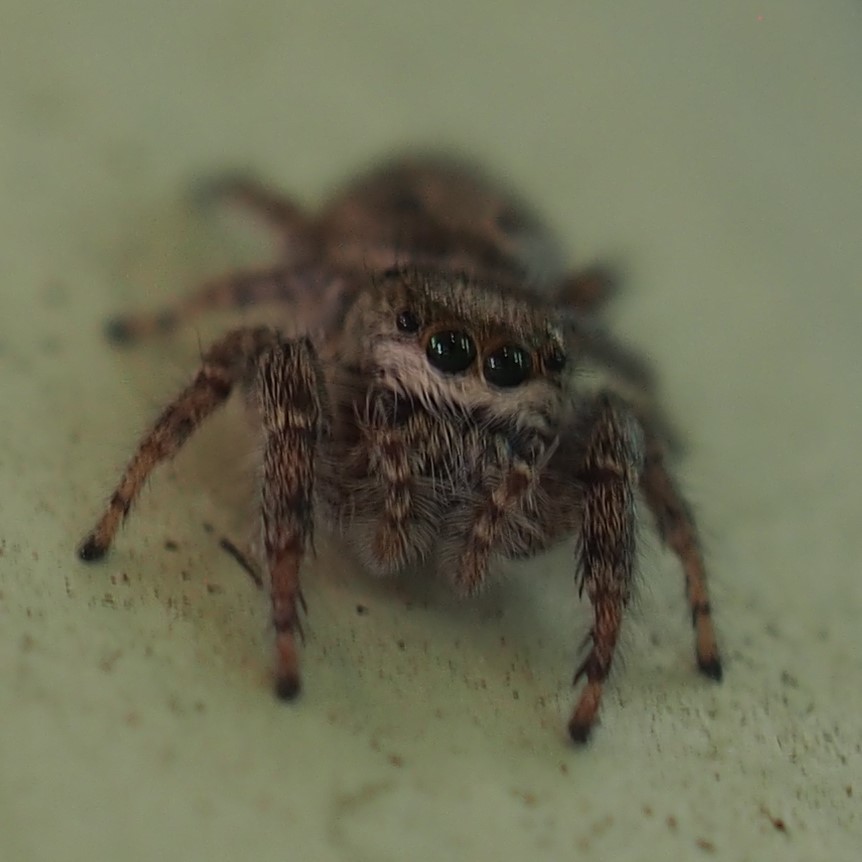
We also still are seeing quite a few tiny Crab Spiders. Here is one that seems to be eating its blue-black prey. Pictures 2 and 3 show another little Crab, probably Mecaphesa asperata, the Northern Crab Spider.
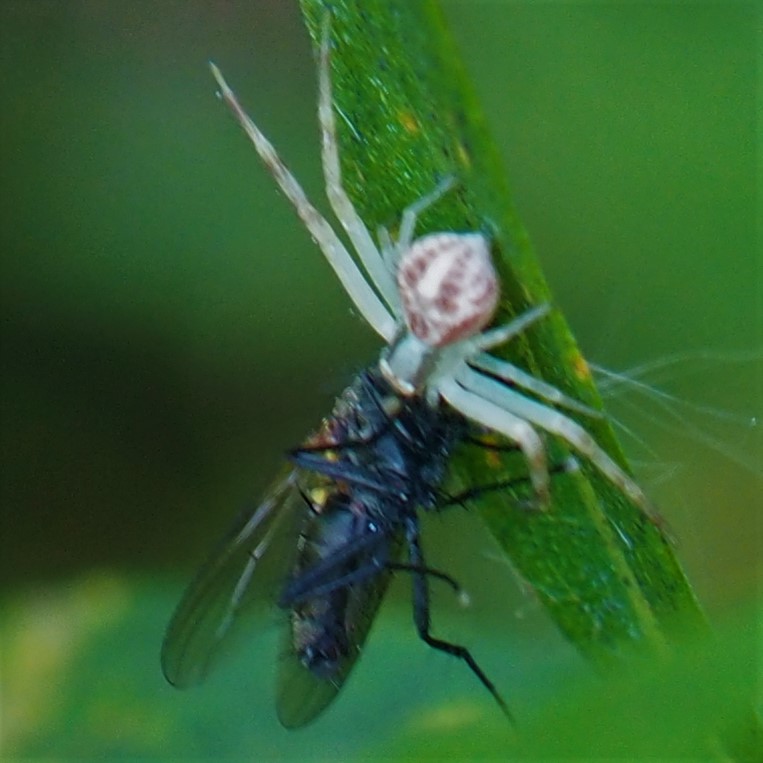
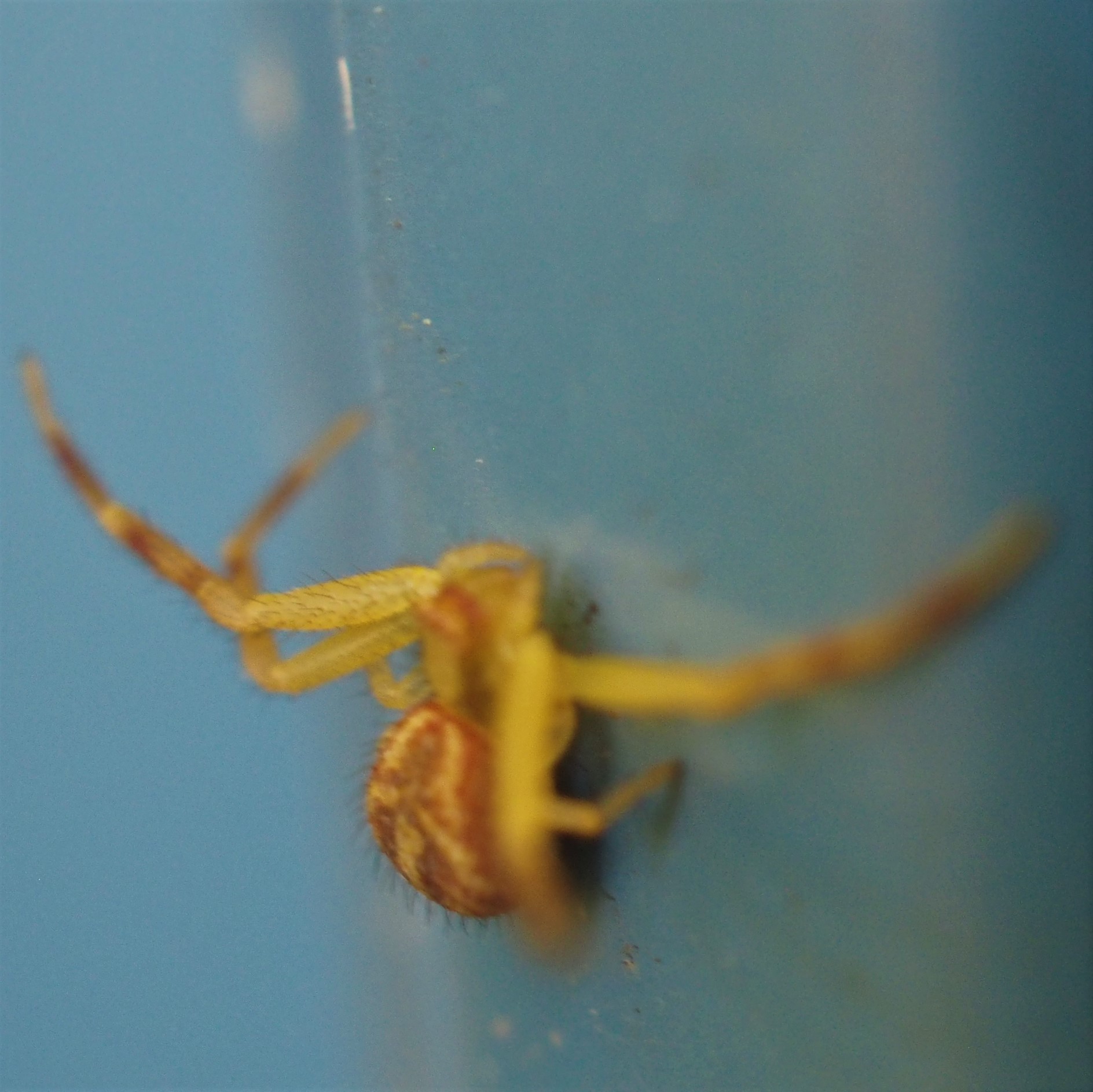
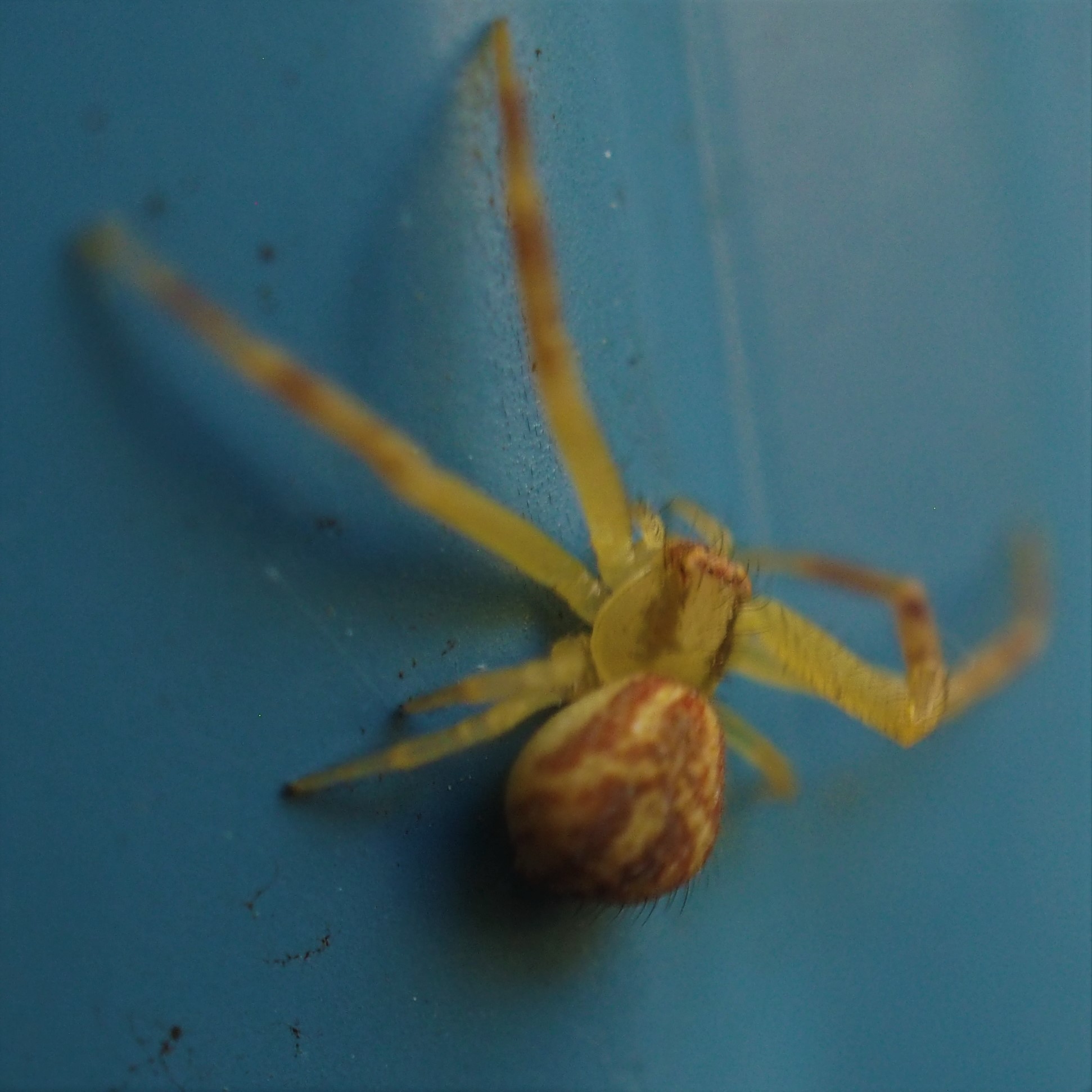
I think from the face of this first Wasp that it is a Dark Paper Wasp, Polistes fuscatus. The second one has a faint color pattern in its wings. Is it WIP again? Let's darken the background. Oh yes it IS! I don't know what the Wasp is, but the colors that come out are nothing short of Fantastic.
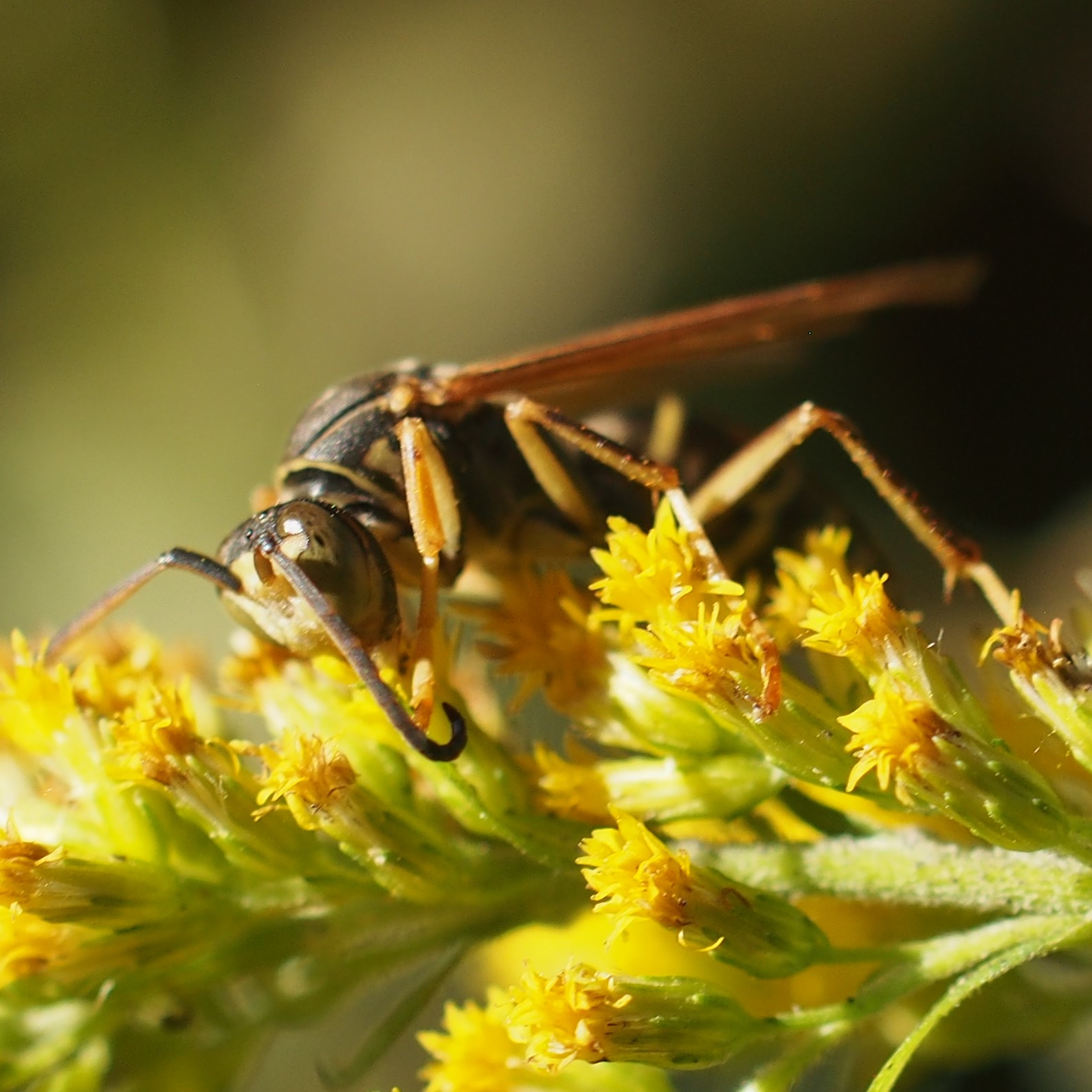
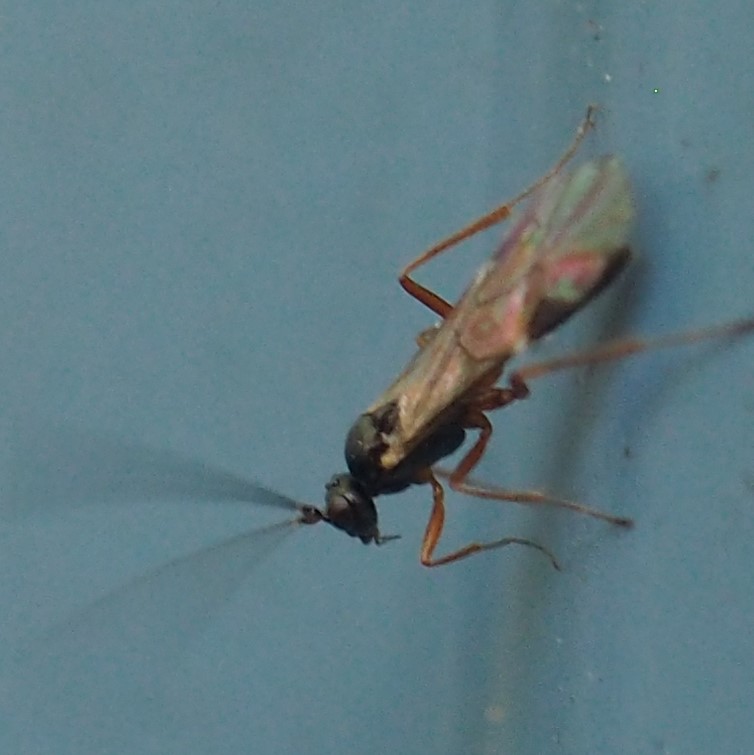
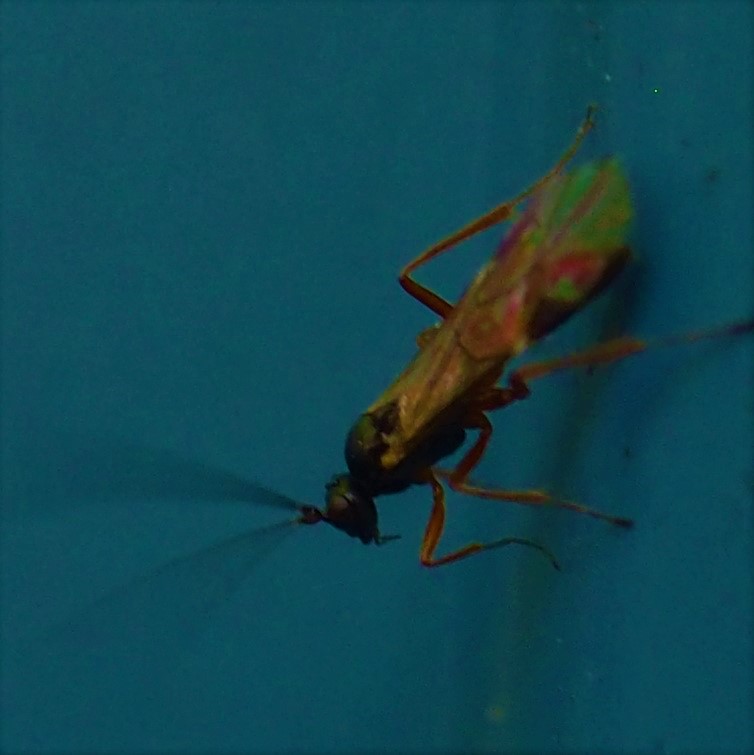
Here's another one. Here it is standing up. It cooperates by posing on its back. When we darken the background the WIP shows right up. I suppose this kind of observation could help in the identification process for insects that otherwise look just alike.
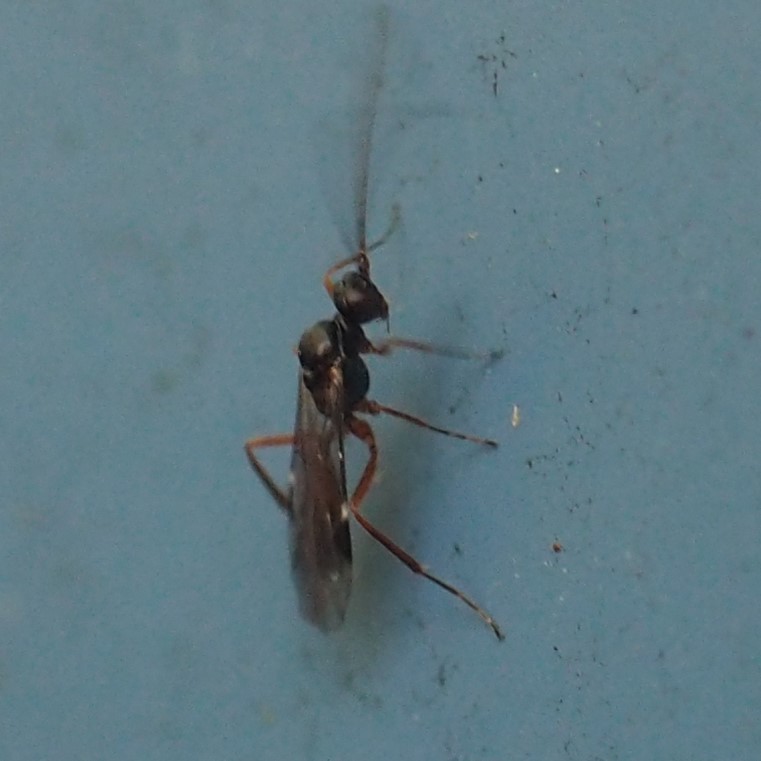
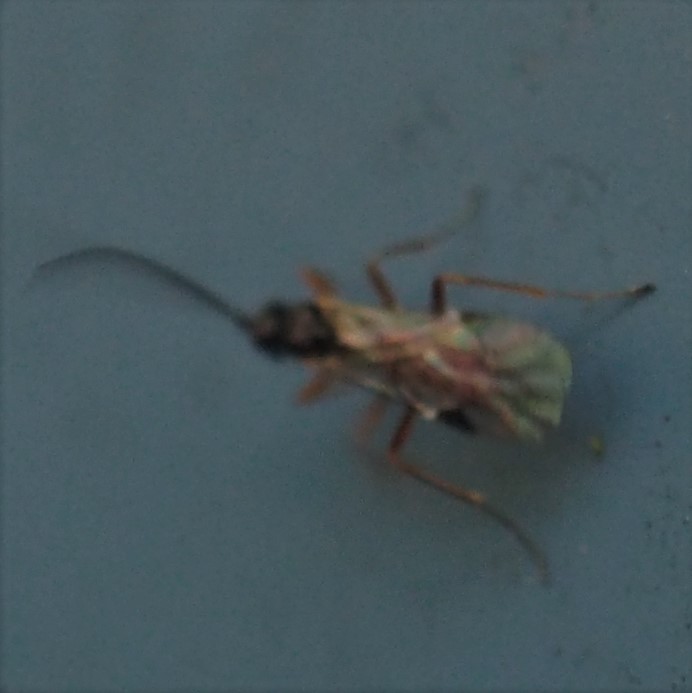
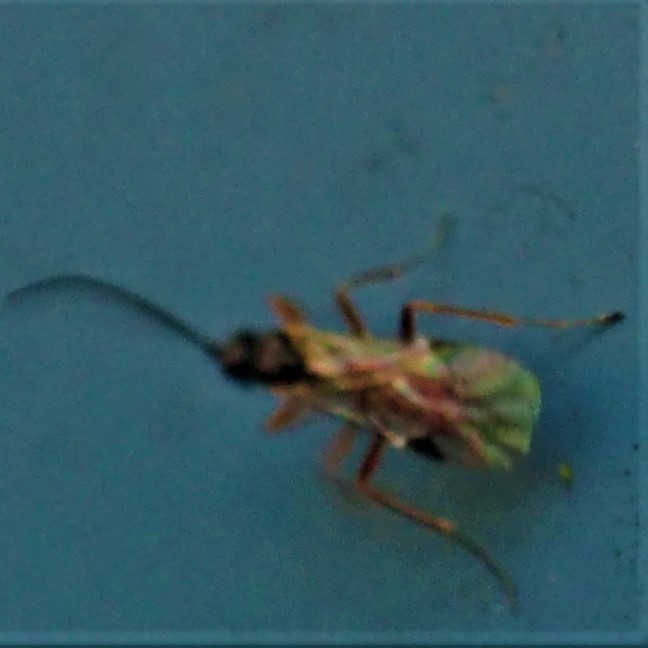
Poor Pond. The Lily leaves are still there but the flowers haven't bloomed in several weeks now. Picture 2 shows the leaves that have fallen in just a week. Their rate of fall is accelerating.
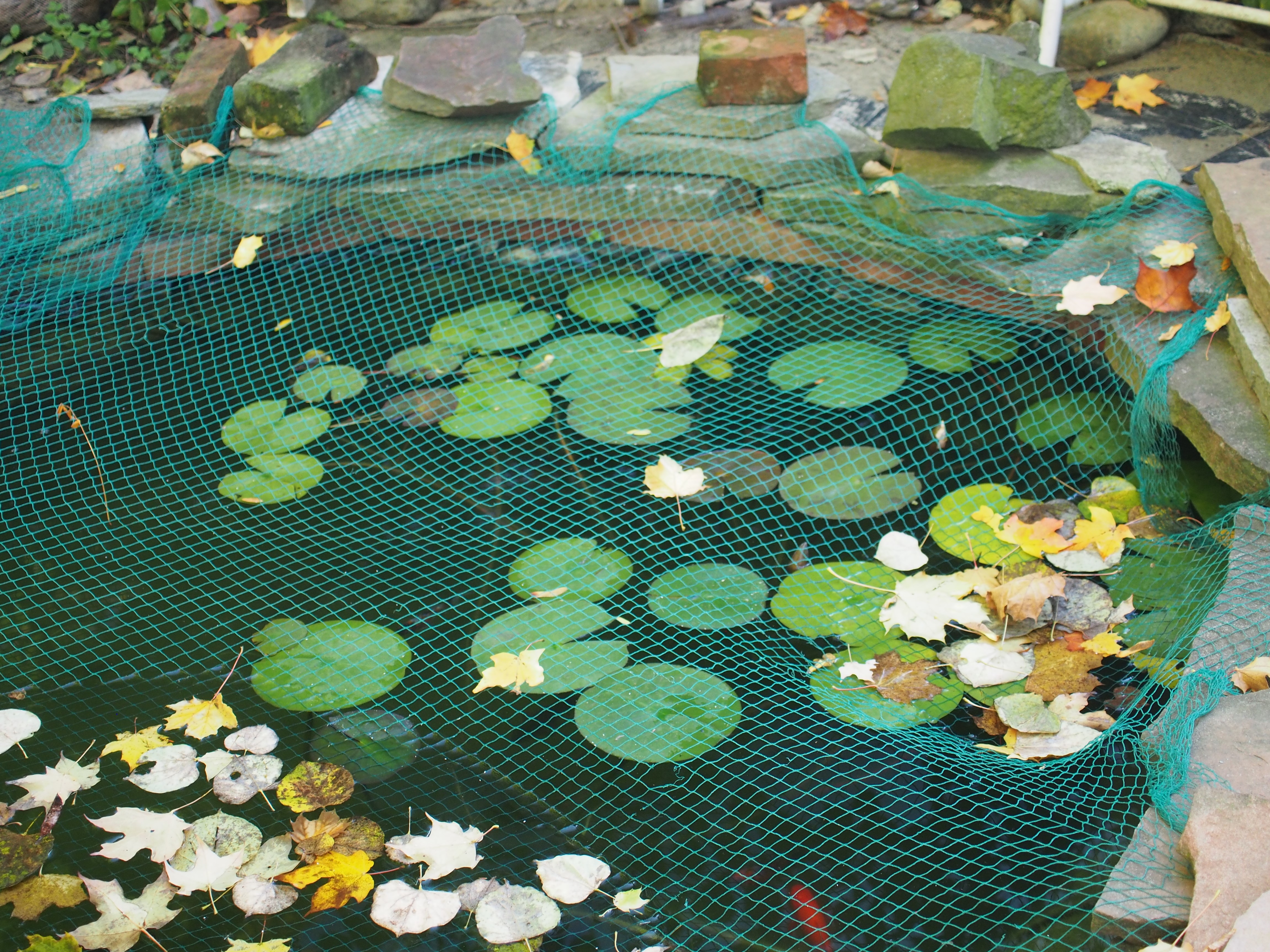
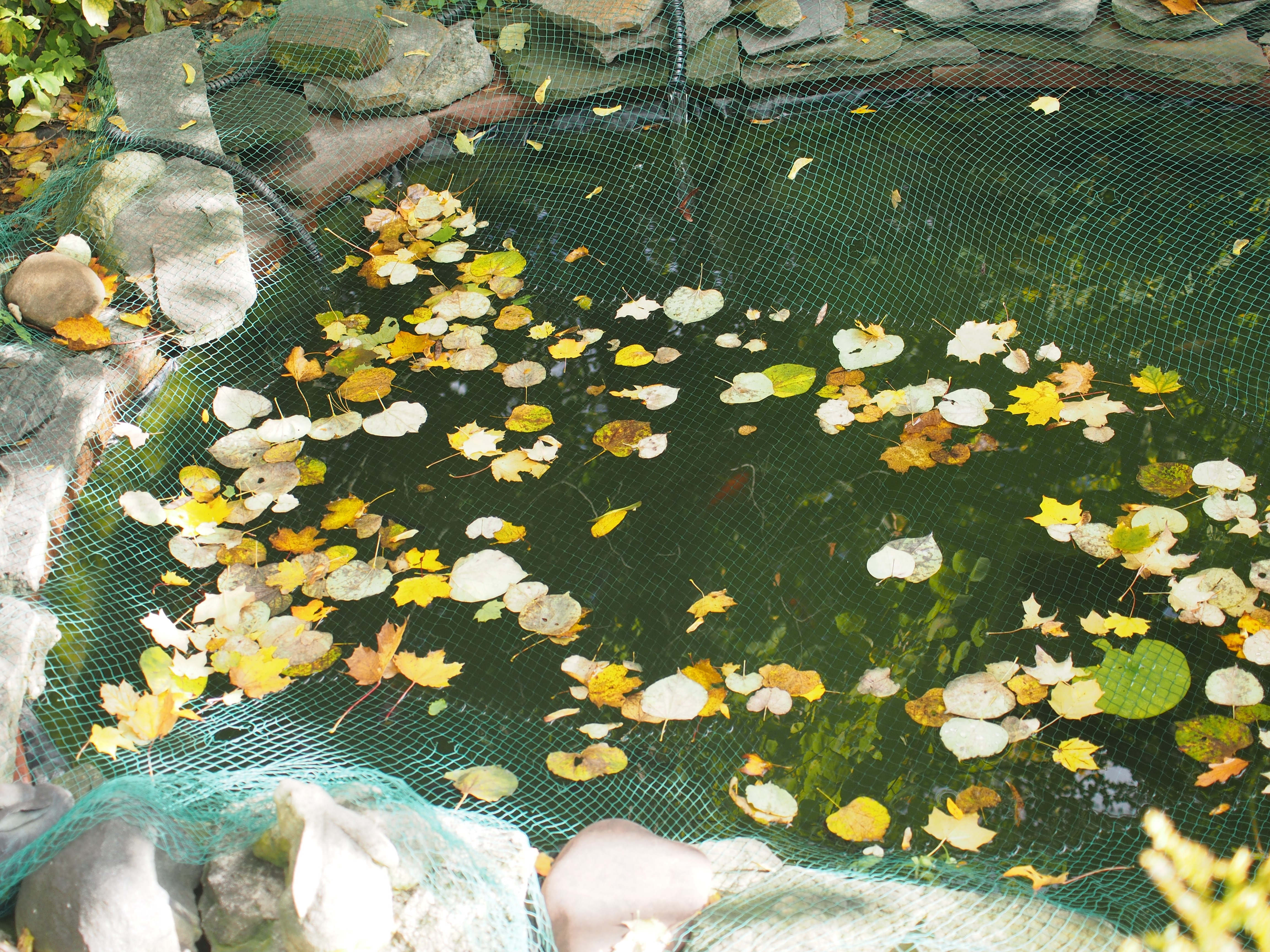
Don't worry about the Fishes you see in these pictures. They are underneath the leaf net, and won't get thrown out when I dump the leaves from it.
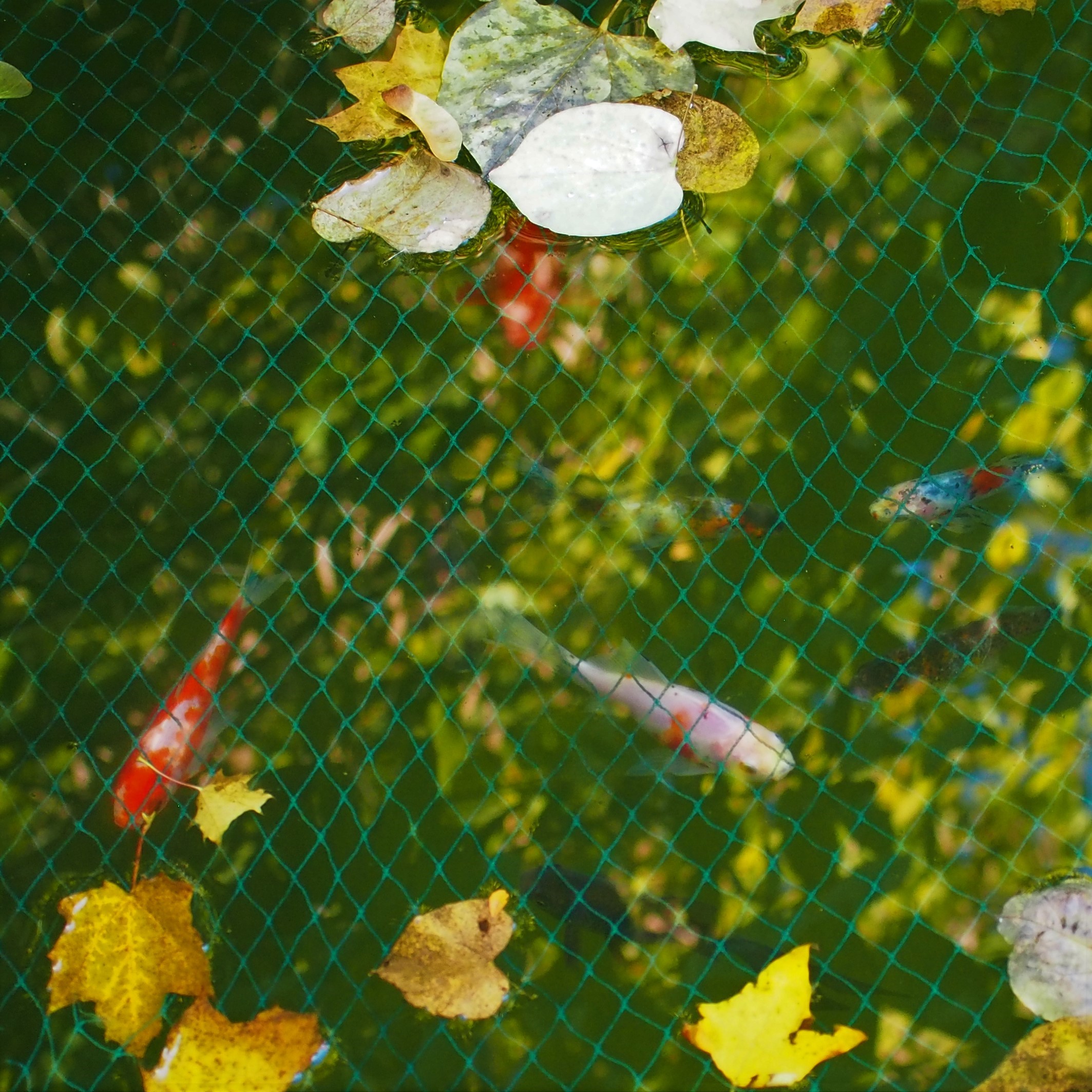
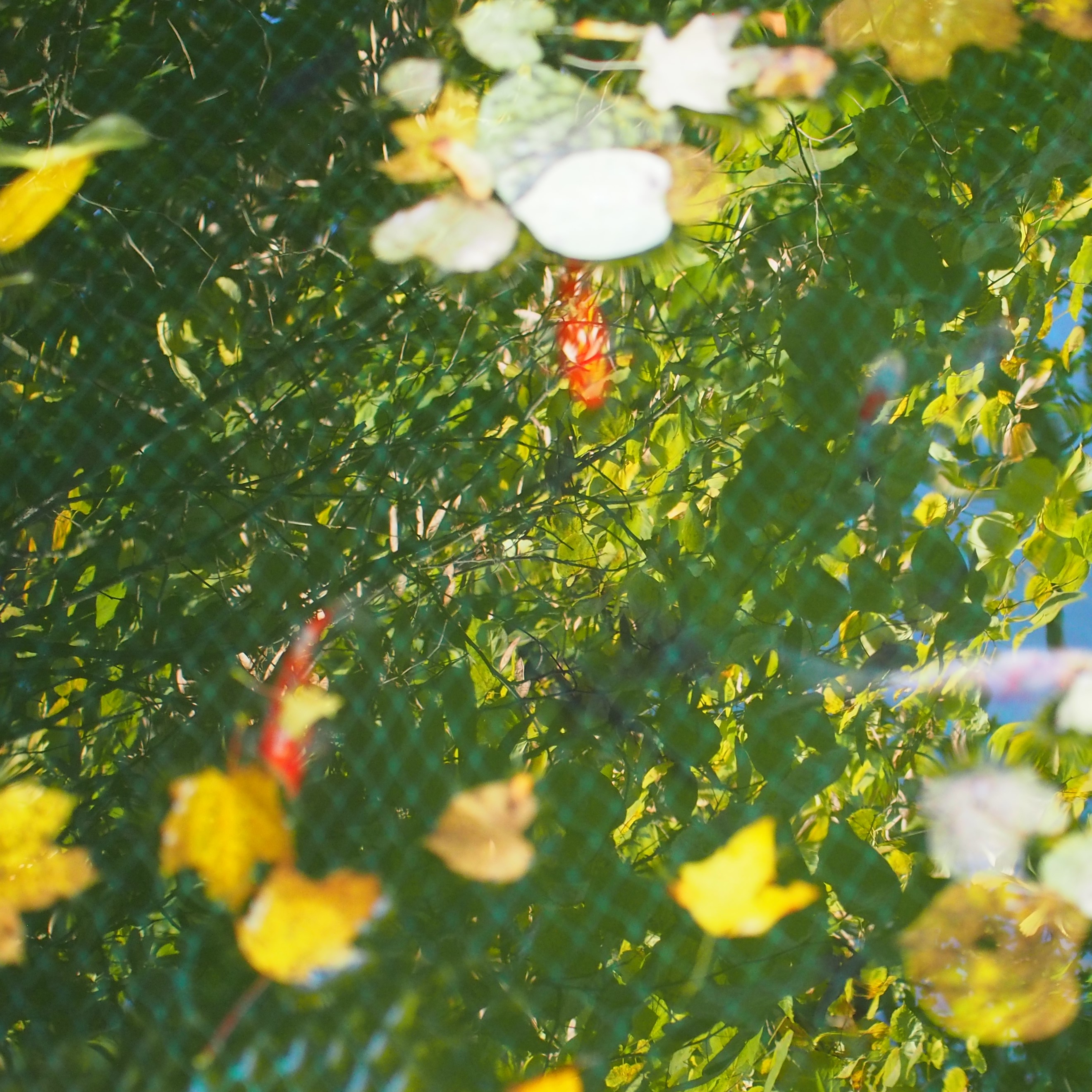
It was indeed another week. The replacement camera body arrived - to my shock all the buttons and dials are in different places from the ones in my beloved original camera - and the ones I recognize do different things from the original, so I'm still studying how to use it to get the kind of auto-focus I'm used to seeing! But we survived a Covid surprise. I didn't get it - I credit the Booster I got before leaving for Virginia in September. I hope everyone is taking good care of his or her self and each other.
Love, Martha
Back to October 16, 2022
Forward to October 30, 2022
Back to main menu
copyright Martha O'Kennon 2022




































 10 21 22 1.jpg)
 10 21 22 2.jpg)
 10 21 22 3.jpg)











































